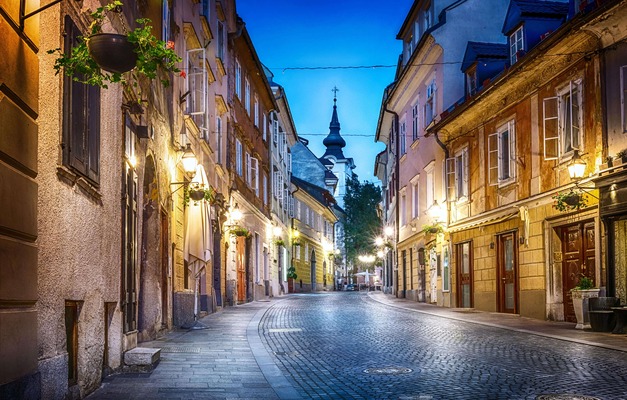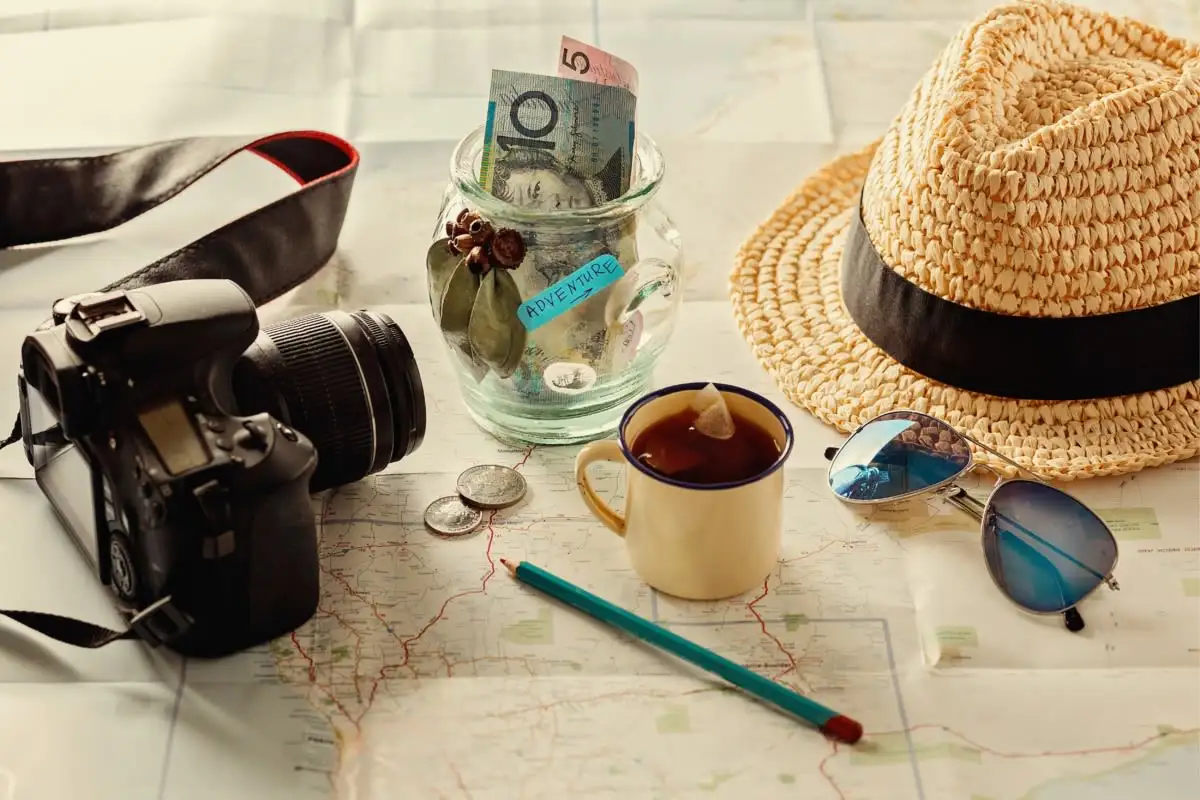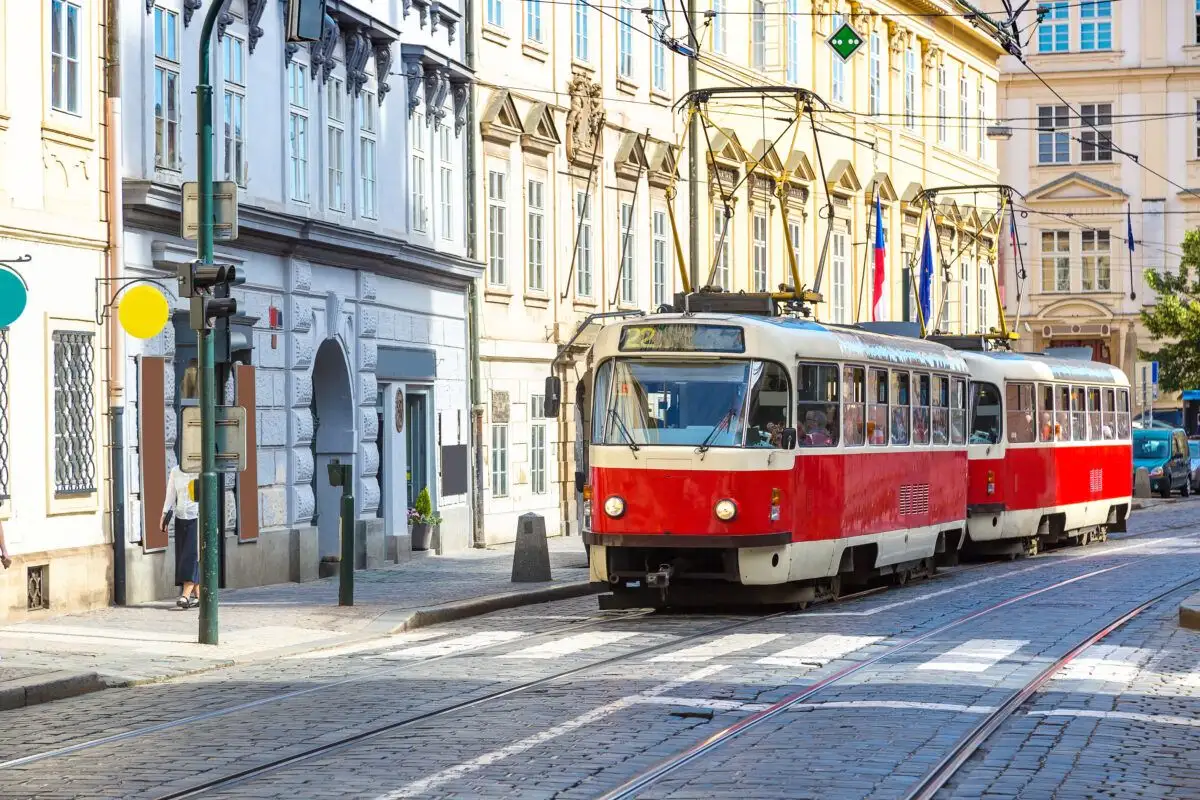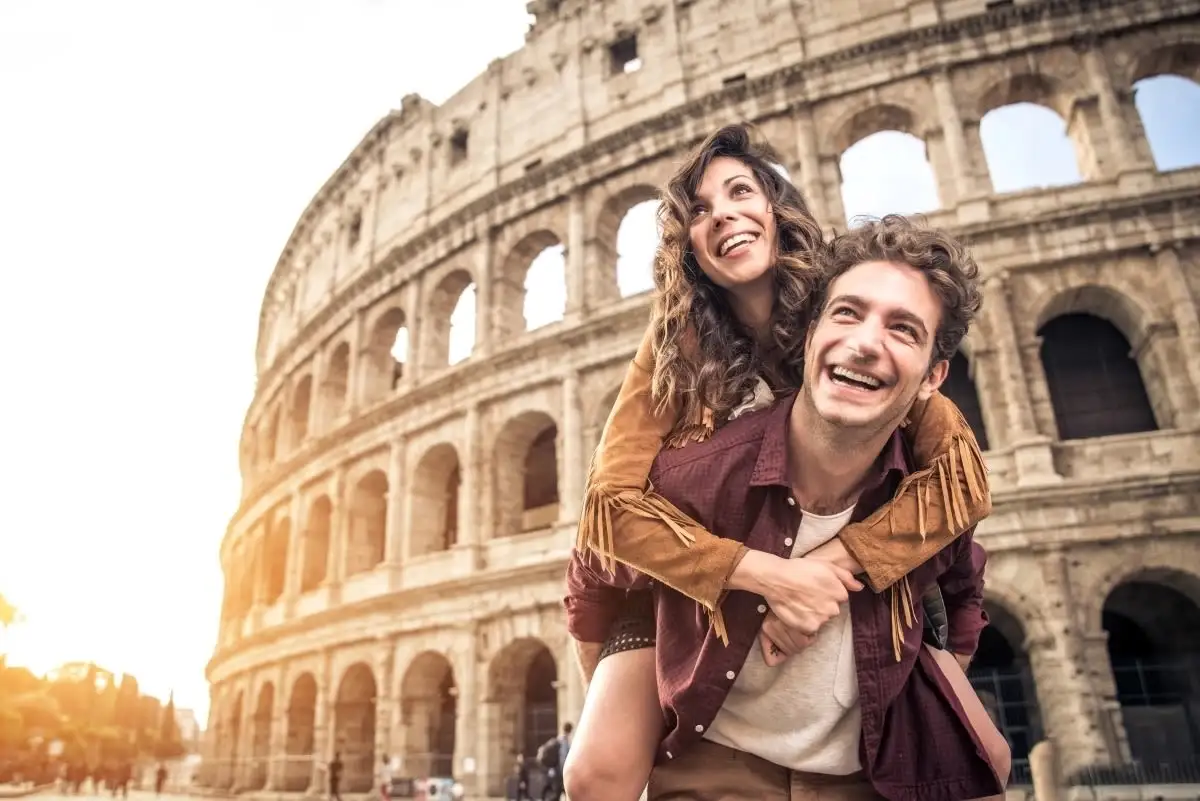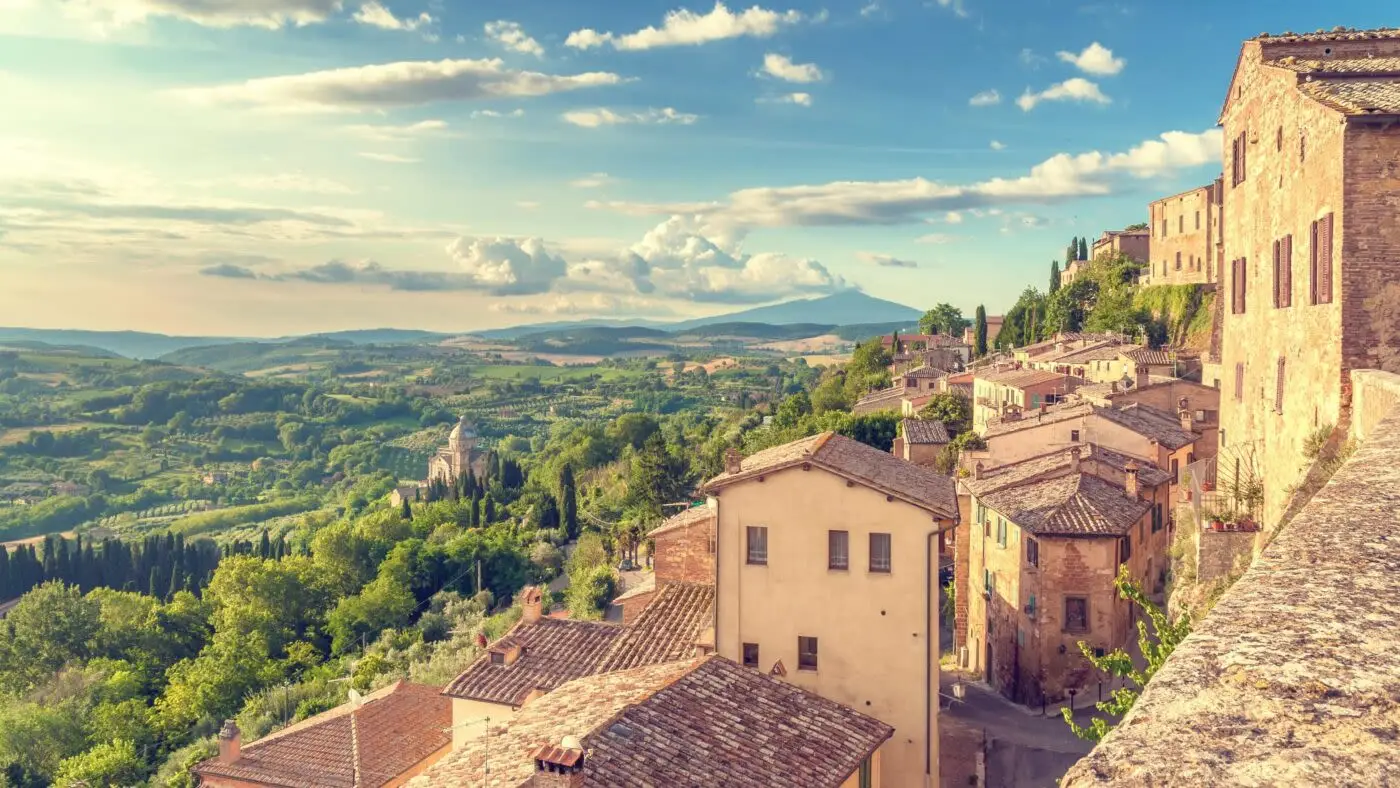
Italian Glory - Rome, Naples & Amalfi Coast Itinerary 10 Days
 10 Day Tour of Rome, Sorrento and Naples
10 Day Tour of Rome, Sorrento and Naples
Overview
Trip Map
Itinerary
Inclusions
Reviews







10 Days 9 Nights
Best Time: Jan-Dec
History Buffs
Local Cuisine & Wine
Journey down Italy’s west-coast on this 10 day tour from Rome to the Amalfi Coast. Begin your trip in Rome, where ancient wonders and vibrant culinary scenes await. Explore the grandeur of the Vatican City, savor local delicacies in Trastevere, and delve into the heart of the Roman Empire with private guided tours. Continue to the breathtaking Amalfi Coast, experiencing its stunning views and hillside towns by boat on an Amalfi Coast day trip. Conclude your adventure in Naples, where the rich history of Pompeii and the dramatic beauty of Mount Vesuvius provide unforgettable moments.
- Discover ancient Rome with a private guided tour, exploring the Colosseum and Roman Forum.
- Savor the flavors of Italy on a twilight Trastevere group food tour.
- Experience the stunning Amalfi Coast on a private guided tour with a boat ride.
- Ascend Mount Vesuvius on a guided excursion, enjoying spectacular views and historical insights.
- Explore the preserved ruins of Pompeii, gaining a vivid glimpse into ancient life.
Journey down Italy’s west-coast on this 10 day tour from Rome to the Amalfi Coast. Begin your trip in Rome, where ancient wonders and vibrant culinary scenes await. Explore the grandeur of the Vatican City, savor local delicacies in Trastevere, and delve into the heart of the Roman Empire with private guided tours. Continue to the breathtaking Amalfi Coast, experiencing its stunning views and hillside towns by boat on an Amalfi Coast day trip. Conclude your adventure in Naples, where the rich history of Pompeii and the dramatic beauty of Mount Vesuvius provide unforgettable moments.
- Discover ancient Rome with a private guided tour, exploring the Colosseum and Roman Forum.
- Savor the flavors of Italy on a twilight Trastevere group food tour.
- Experience the stunning Amalfi Coast on a private guided tour with a boat ride.
- Ascend Mount Vesuvius on a guided excursion, enjoying spectacular views and historical insights.
- Explore the preserved ruins of Pompeii, gaining a vivid glimpse into ancient life.

Colosseum
Historic Landmarks

Vatican City
Churches & Monasteries

Piazza Venezia & Trajan's Market
Historic Landmarks

Piazza Tasso
Architecture

The Veiled Christ
Churches & Monasteries

Archaeological Museum
Museums & Galleries
Must see sights

Colosseum
Historic Landmarks

Vatican City
Churches & Monasteries

Piazza Venezia & Trajan's Market
Historic Landmarks

Piazza Tasso
Architecture

The Veiled Christ
Churches & Monasteries

Archaeological Museum
Museums & Galleries
Starting from
$3870
per person
 Not included
Not included Secure Your Customizable Trip
Enter your details to embark on a journey that can be tailored just for you.
Start
Travelers
0 travelers
Add Room
Remove Room
Preferred Hotel Stars
Select Hotel Stars
Craft Your Own Itinerary
Select your interests and destinations for a trip plan inspired by you.
Southern Italy in Ten Days Trip - Map & Itinerary
Enable/Disable Map Scrolling
Click To Make Map Interactive

Southern Italy in Ten Days Trip Timeline
 Edit Details
Edit DetailsArrival
4 nights
Rome
Italy
2 nights
Sorrento
Italy
Shuttle: 1h10m
3 nights
Naples
Italy
Departure
Day-By-Day Itinerary of Southern Italy in Ten Days Trip

Day 1
Arrive Rome
Day 1
Arrive Rome




11:30 AM
Private Transfer to your Hotel
For your arrival in Rome, we will provide information on the customs and passport procedures. We will schedule a pick up for your flight's arrival time. You will be met at arrivals inside the terminal by a driver holding a sign with your name on it. The transfer is for your party only - you will not be sharing a vehicle. The cost of the ride will be included in your itinerary package and you will be taken directly to your hotel. IMPORTANT NOTE: Please be aware the car service can fit up to 1 checked item of luggage and 1 personal item per person, such as a purse or small backpack. If you think you will have more baggage, please inform your travel consultant as this may result in an additional fee.

Day 1
Arrive Rome


Day 1
Arrive Rome





11:30 AM:
Private Transfer to your Hotel
Mid-Day/Afternoon:
Rome's Historic Center
Late Afternoon/Early Evening:
Spanish Steps
Early Evening/Evening:
Dining in Piazza Navona

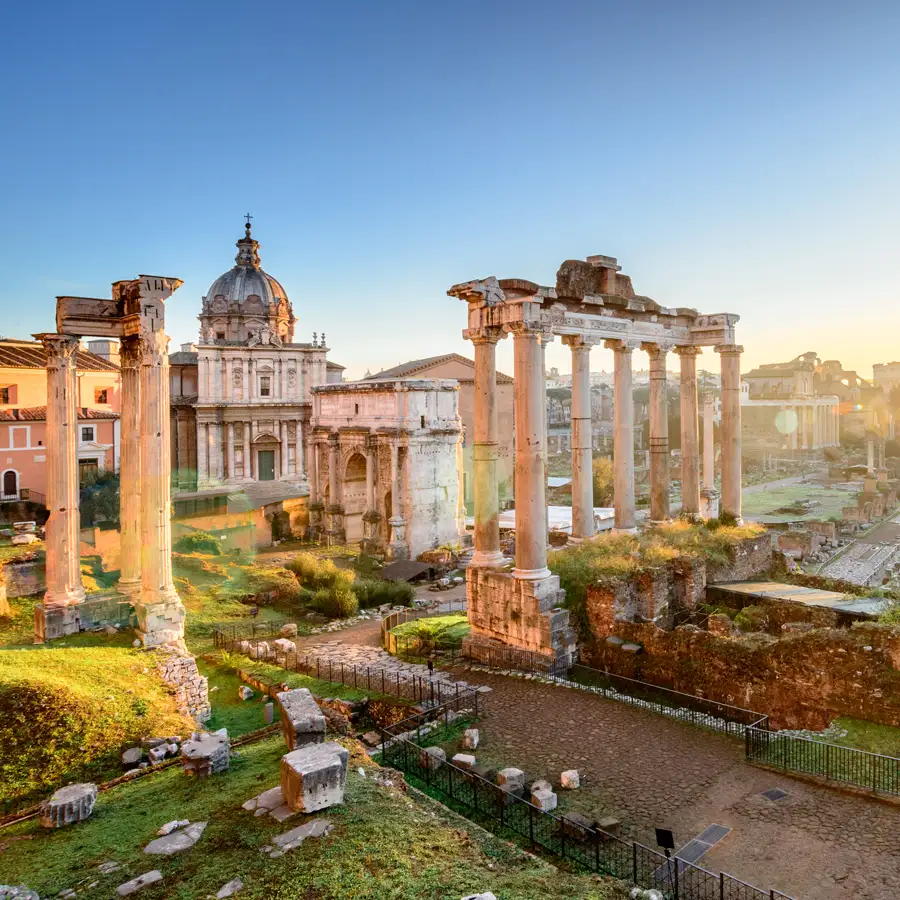
Day 2
Rome
Day 2
Rome



9:00 AM - 12:00 PM
Ancient Rome Guided Walk
On this 3-hour private guided tour, you will explore the imposing remains of ancient Rome. Your guide will explain the extraordinary history of the birth of Rome, life in the city and everything about the fall of the Empire. Visit the Colosseum, the monumental ruins of the Roman Forum, and end the tour on the Capitoline Hill, the smallest and most important of the seven hills of Ancient Rome.
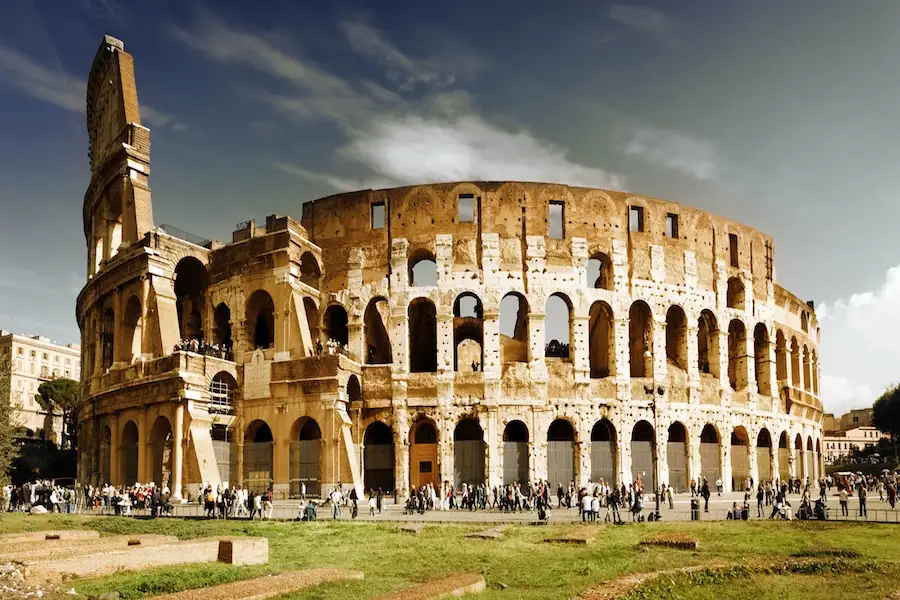
Colosseum
Ancient Roman Ampitheater
Show More

Colosseum
Ancient Roman Ampitheater
Show More

Colosseum
Ancient Roman Ampitheater
Show More

Colosseum
Ancient Roman Ampitheater
Show More

Colosseum
Ancient Roman Ampitheater
Show More
prev
next

Day 2
Rome


Colosseum
 Highlight of Ancient Rome Guided Walk
Highlight of Ancient Rome Guided WalkAncient Roman Ampitheater
Monumental Roman amphitheater once used for gladiatorial games

Colosseum
 Highlight of Ancient Rome Guided Walk
Highlight of Ancient Rome Guided WalkAncient Roman Ampitheater
Monumental Roman amphitheater once used for gladiatorial games

Colosseum
 Highlight of Ancient Rome Guided Walk
Highlight of Ancient Rome Guided WalkAncient Roman Ampitheater
Monumental Roman amphitheater once used for gladiatorial games

Colosseum
 Highlight of Ancient Rome Guided Walk
Highlight of Ancient Rome Guided WalkAncient Roman Ampitheater
Monumental Roman amphitheater once used for gladiatorial games

Colosseum
 Highlight of Ancient Rome Guided Walk
Highlight of Ancient Rome Guided WalkAncient Roman Ampitheater
Monumental Roman amphitheater once used for gladiatorial games
prev
next


Day 3
Rome
Day 3
Rome



Early Morning to Afternoon
Vatican City
Rome is unique in the world in that it contains an independent country within its city limits - the Vatican City, from where the Pope administers the Catholic Church. The symbolic center of Catholicism is St Peter's Basilica, the second-largest Catholic church in the world and among the most beautiful. The Vatican Museum contains one of the greatest collections of art in existence, including Michelangelo's jaw-dropping Sistine Chapel. The popes had a bigger influence on Rome than just the collection of art. The Pope's title is actually Bishop of Rome, and popes administed the city for centuries, shaping its architecture & public spaces. Rome was re-built to be an example of urban beauty, and the Vatican was meant to be the showcase within the showcase. Their success is evident from the throngs of visitors who flock here even today.
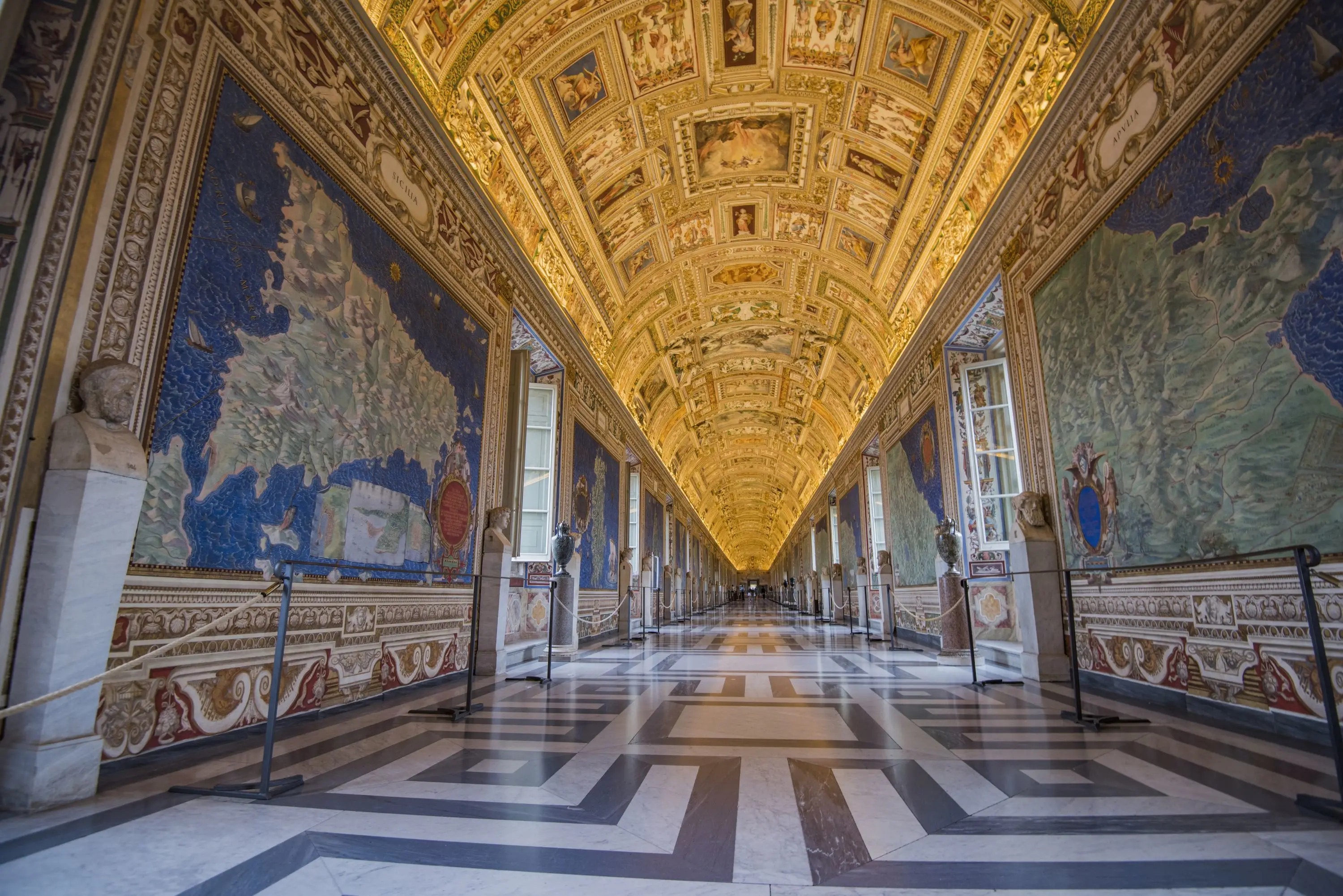
Vatican Museums
Book early if you want to see the Vatican Museum's monumental works of art from the greatest Italian artists of the Renaissance.
Show More
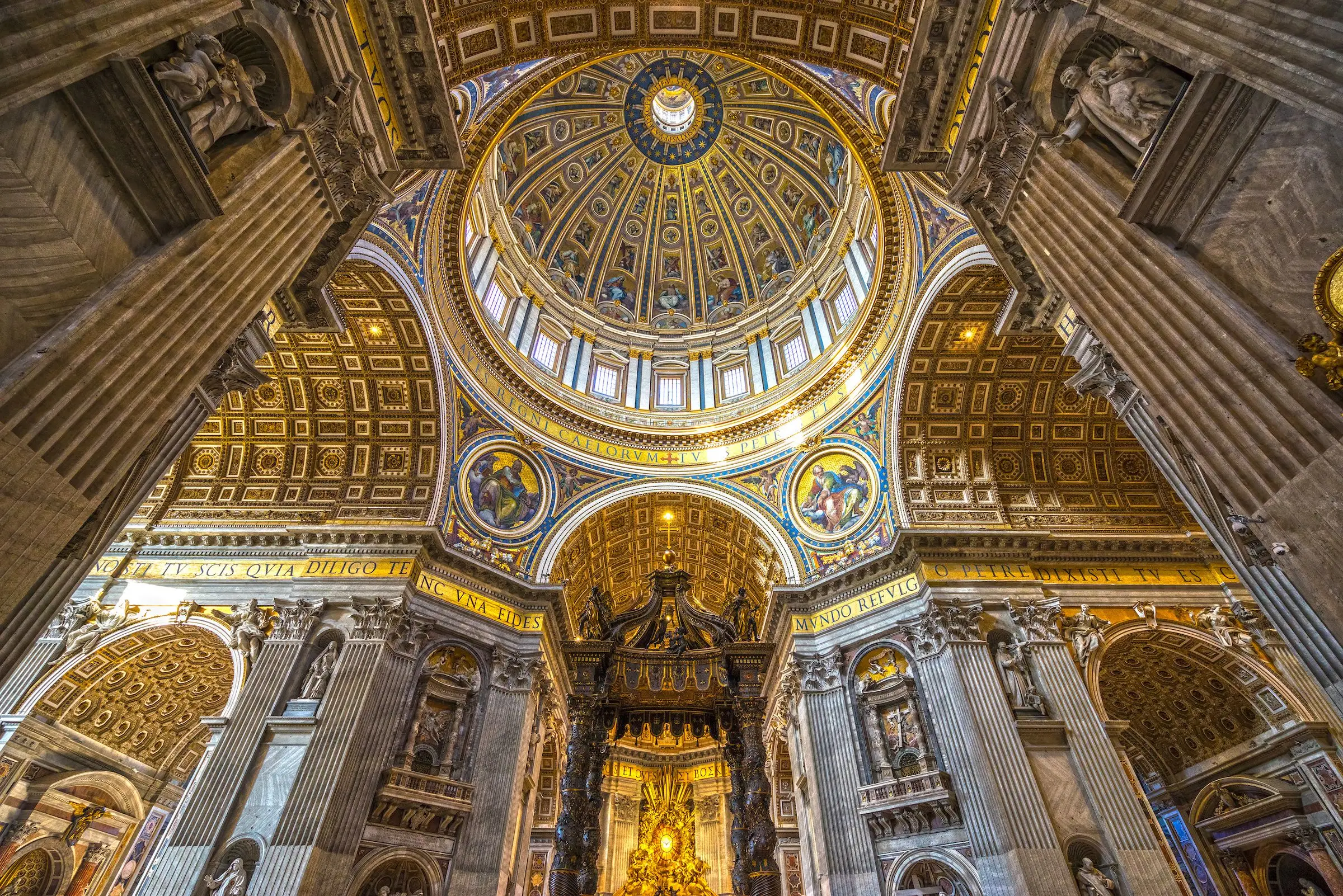
St Peter’s Basilica
Explore the gigantic and incredibly beautiful church known as "the greatest of all churches of Christendom".
Show More

Vatican Gardens
Escape the crowds in this oasis of green hidden behind the walls of the Vatican.
Show More
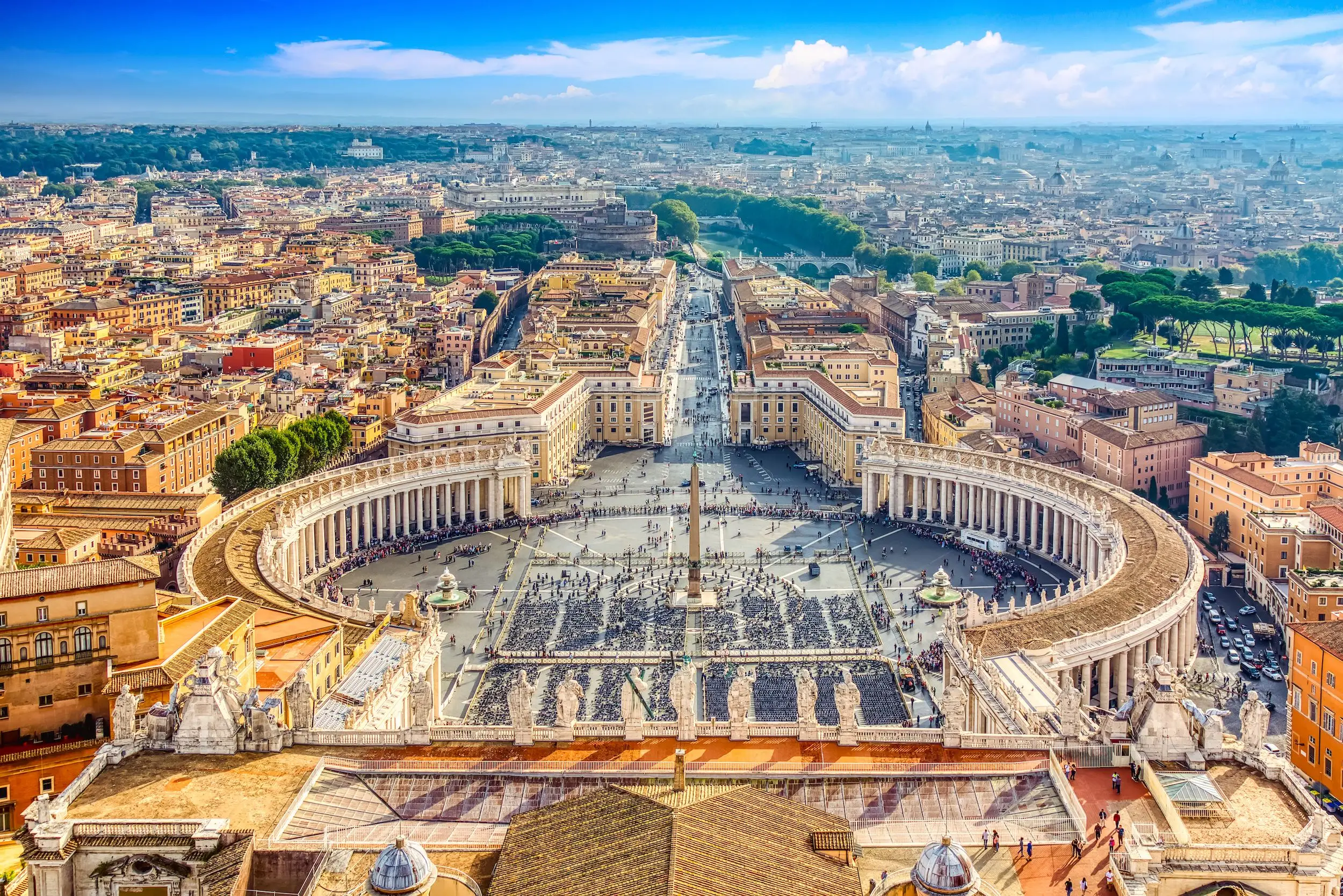
St Peter's Square
Stand in the middle of this famous square in which the faithful gather to hear the Pope give audiences and celebrate mass.
Show More
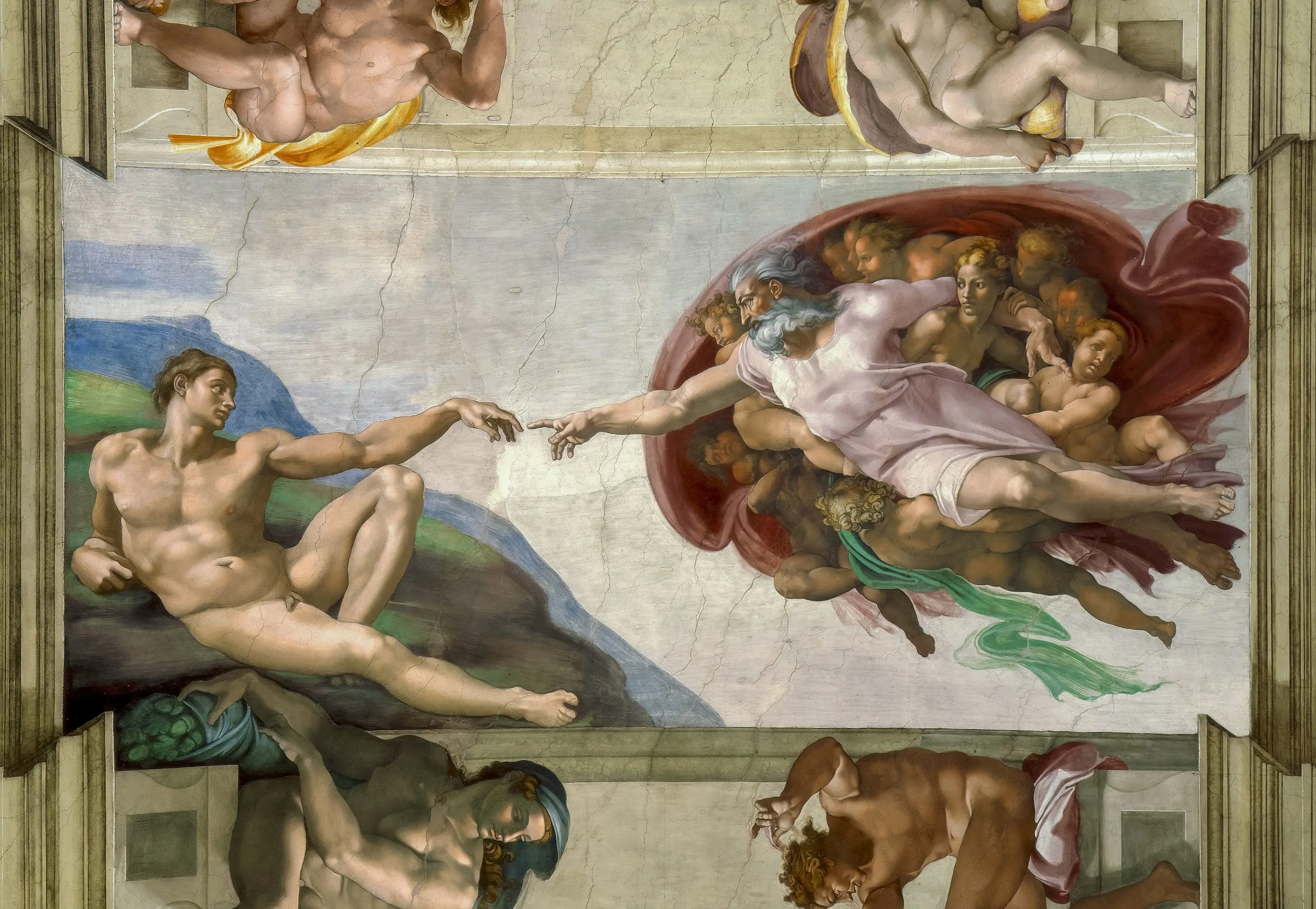
Sistine Chapel
Gaze up at the world's most famous ceiling, the masterpiece of Michelangelo.
Show More

Vatican Museums
Book early if you want to see the Vatican Museum's monumental works of art from the greatest Italian artists of the Renaissance.
Show More

St Peter’s Basilica
Explore the gigantic and incredibly beautiful church known as "the greatest of all churches of Christendom".
Show More

Vatican Gardens
Escape the crowds in this oasis of green hidden behind the walls of the Vatican.
Show More

St Peter's Square
Stand in the middle of this famous square in which the faithful gather to hear the Pope give audiences and celebrate mass.
Show More

Sistine Chapel
Gaze up at the world's most famous ceiling, the masterpiece of Michelangelo.
Show More

Vatican Museums
Book early if you want to see the Vatican Museum's monumental works of art from the greatest Italian artists of the Renaissance.
Show More
prev
next

Day 3
Rome


Vatican Museums
 Highlight of Vatican City
Highlight of Vatican CityBook early if you want to see the Vatican Museum's monumental works of art from the greatest Italian artists of the Renaissance.
The Vatican Museum is actually 26 different museums, which include not only exhibitions but chapels, apartments, and other rooms of the Vatican palace, covering a huge range of fine and applied arts patronized by the popes. There's also an outstanding collection of ancient antiquities (including even the Emperor Nero's red stone bathtub), a gallery of hand-painted maps, and whole rooms turned into works of art. In addition to ancient and medieval works of art, you'll see masterpieces by the "who's who" of the Italian Renaissance, including Raphael, Leonardo da Vinci, Titian, and Caravaggio. Other highlights include panels by the brilliant monk-artist Fra Angelico, works from the Venetian school, including Vavarini, and much, much more. Booking in advance is highly recommended as otherwise you can wait for hours or not even be able to get in at all.

St Peter’s Basilica
 Highlight of Vatican City
Highlight of Vatican CityExplore the gigantic and incredibly beautiful church known as "the greatest of all churches of Christendom".
The basilica is one of the chief pilgrimage sites in the Christian world, and one of the most popular tourist destinations in Rome. The basilica is the symbolic center of the church not only because the Pope frequently celebrates Mass there, but because it is believed that the apostle St. Peter is buried beneath it. Catholics consider Peter as the first Bishop of Rome and "the rock" upon which the Catholic Church was built, in accordance with Christ's instructions. Inside you can admire sculptures by Bernini as well as Michelangelo's famous sculpture of the Virgin Mary holding the crucified Jesus, known as The Pietà. The church's elaborate and impressive golden interior is a sight to behold. Other sights include St Peter's tomb, the Papal crypts in the necropolis under the basilica, as well as the dome, which rewards visitors with views over Rome. Entry is free, but queues to visit the Basilica can be lengthy, so it is highly advised to either get there early or to purchase a skip the line entrance. The dome is also paid entry.

Vatican Gardens
 Highlight of Vatican City
Highlight of Vatican CityEscape the crowds in this oasis of green hidden behind the walls of the Vatican.
Accessible only via a guided tour, the gardens are definitely worth a visit. Just as the Popes have for hundreds of years, you can stroll the gardens and relax amidst the greenery, while taking in the perfect view of St. Peter's.

St Peter's Square
 Highlight of Vatican City
Highlight of Vatican CityStand in the middle of this famous square in which the faithful gather to hear the Pope give audiences and celebrate mass.
As one of the most superb conceptions of its kind in civic architecture, St Peter’s Square is the masterpiece of Gian Lorenzo Bernini and makes a wonderful approach to one of the world’s most magnificent churches, St Peter's Basilica. An oval rather than an actual square, the piazza, laid out in 1656-67, is partially enclosed by two semi-circular colonnades on which stand 96 statues of saints and martyrs. At the center of the oval stands an 84-foot (26m) tall Egyptian obelisk of red granite.

Sistine Chapel
 Highlight of Vatican City
Highlight of Vatican CityGaze up at the world's most famous ceiling, the masterpiece of Michelangelo.
This famous chapel inside the Vatican Museums is best known for Michelangelo's 16th-century painted ceiling of "The Creation of Adam" and "The Last Judgement" fresco that covers the whole altar wall of the chapel. The jaw-dropping sight is not to be missed, considered one of the top highlights of visiting the Vatican Museums and one of the top artistic wonders of the world.

Vatican Museums
 Highlight of Vatican City
Highlight of Vatican CityBook early if you want to see the Vatican Museum's monumental works of art from the greatest Italian artists of the Renaissance.
The Vatican Museum is actually 26 different museums, which include not only exhibitions but chapels, apartments, and other rooms of the Vatican palace, covering a huge range of fine and applied arts patronized by the popes. There's also an outstanding collection of ancient antiquities (including even the Emperor Nero's red stone bathtub), a gallery of hand-painted maps, and whole rooms turned into works of art. In addition to ancient and medieval works of art, you'll see masterpieces by the "who's who" of the Italian Renaissance, including Raphael, Leonardo da Vinci, Titian, and Caravaggio. Other highlights include panels by the brilliant monk-artist Fra Angelico, works from the Venetian school, including Vavarini, and much, much more. Booking in advance is highly recommended as otherwise you can wait for hours or not even be able to get in at all.

St Peter’s Basilica
 Highlight of Vatican City
Highlight of Vatican CityExplore the gigantic and incredibly beautiful church known as "the greatest of all churches of Christendom".
The basilica is one of the chief pilgrimage sites in the Christian world, and one of the most popular tourist destinations in Rome. The basilica is the symbolic center of the church not only because the Pope frequently celebrates Mass there, but because it is believed that the apostle St. Peter is buried beneath it. Catholics consider Peter as the first Bishop of Rome and "the rock" upon which the Catholic Church was built, in accordance with Christ's instructions. Inside you can admire sculptures by Bernini as well as Michelangelo's famous sculpture of the Virgin Mary holding the crucified Jesus, known as The Pietà. The church's elaborate and impressive golden interior is a sight to behold. Other sights include St Peter's tomb, the Papal crypts in the necropolis under the basilica, as well as the dome, which rewards visitors with views over Rome. Entry is free, but queues to visit the Basilica can be lengthy, so it is highly advised to either get there early or to purchase a skip the line entrance. The dome is also paid entry.

Vatican Gardens
 Highlight of Vatican City
Highlight of Vatican CityEscape the crowds in this oasis of green hidden behind the walls of the Vatican.
Accessible only via a guided tour, the gardens are definitely worth a visit. Just as the Popes have for hundreds of years, you can stroll the gardens and relax amidst the greenery, while taking in the perfect view of St. Peter's.

St Peter's Square
 Highlight of Vatican City
Highlight of Vatican CityStand in the middle of this famous square in which the faithful gather to hear the Pope give audiences and celebrate mass.
As one of the most superb conceptions of its kind in civic architecture, St Peter’s Square is the masterpiece of Gian Lorenzo Bernini and makes a wonderful approach to one of the world’s most magnificent churches, St Peter's Basilica. An oval rather than an actual square, the piazza, laid out in 1656-67, is partially enclosed by two semi-circular colonnades on which stand 96 statues of saints and martyrs. At the center of the oval stands an 84-foot (26m) tall Egyptian obelisk of red granite.

Sistine Chapel
 Highlight of Vatican City
Highlight of Vatican CityGaze up at the world's most famous ceiling, the masterpiece of Michelangelo.
This famous chapel inside the Vatican Museums is best known for Michelangelo's 16th-century painted ceiling of "The Creation of Adam" and "The Last Judgement" fresco that covers the whole altar wall of the chapel. The jaw-dropping sight is not to be missed, considered one of the top highlights of visiting the Vatican Museums and one of the top artistic wonders of the world.

Vatican Museums
 Highlight of Vatican City
Highlight of Vatican CityBook early if you want to see the Vatican Museum's monumental works of art from the greatest Italian artists of the Renaissance.
The Vatican Museum is actually 26 different museums, which include not only exhibitions but chapels, apartments, and other rooms of the Vatican palace, covering a huge range of fine and applied arts patronized by the popes. There's also an outstanding collection of ancient antiquities (including even the Emperor Nero's red stone bathtub), a gallery of hand-painted maps, and whole rooms turned into works of art. In addition to ancient and medieval works of art, you'll see masterpieces by the "who's who" of the Italian Renaissance, including Raphael, Leonardo da Vinci, Titian, and Caravaggio. Other highlights include panels by the brilliant monk-artist Fra Angelico, works from the Venetian school, including Vavarini, and much, much more. Booking in advance is highly recommended as otherwise you can wait for hours or not even be able to get in at all.
prev
next


Day 4
Rome
Day 4
Rome


Morning/Mid-Day
Esquilino District
Upon first glance, this urban neighborhood of Rome may seem busy and overwhelming, but hidden among its traffic-noisy streets are some of Rome's most beautiful churches, artistic treasures, and cultural museums, including the Baths of Diocletian.
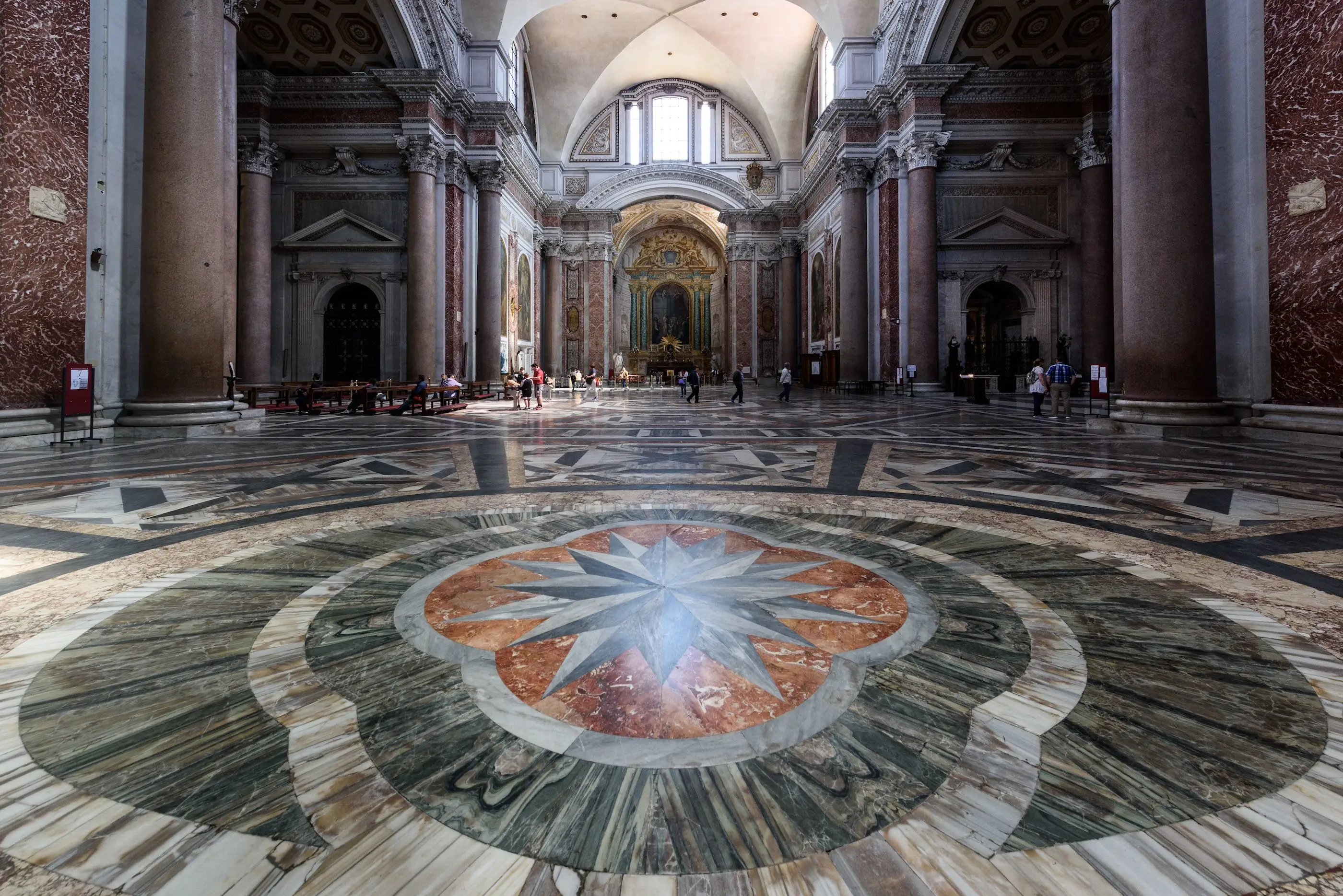
Basilica of Santa Maria degli Angeli
See a Michelangelo-designed church built within the former Baths of Diocletian.
Show More

Palazzo Massimo alle Terme
Visit one of Rome's greatest but most unheralded museums of antiquity.
Show More

Baths of Diocletian
Walk the ruins of what was once the largest themal baths in the ancient Roman world.
Show More

Basilica of Santa Maria degli Angeli
See a Michelangelo-designed church built within the former Baths of Diocletian.
Show More

Palazzo Massimo alle Terme
Visit one of Rome's greatest but most unheralded museums of antiquity.
Show More

Baths of Diocletian
Walk the ruins of what was once the largest themal baths in the ancient Roman world.
Show More

Basilica of Santa Maria degli Angeli
See a Michelangelo-designed church built within the former Baths of Diocletian.
Show More
prev
next

Day 4
Rome


Basilica of Santa Maria degli Angeli
 Highlight of Esquilino District
Highlight of Esquilino DistrictSee a Michelangelo-designed church built within the former Baths of Diocletian.
In 1561, almost 1000 years after the baths of Diocletian fell into disuse, Pope Pius IV decided to build a basilica consecrated to Our Lady of the Angels within the baths. He commisioned the 86-year-old Michelangelo to plan the church, making use of some of the existing structures of the baths. Today a visit to the basilica gives you an idea of the enormous size of the baths. The church was constructed at the site of the former frigidarium (a large cold pool which would be used to close the pores after using the hot baths) and incorporates several elements of the former thermae. The vestibule occupies the former tepidarium (a Roman-style relaxation room) and the imposing entrance is an exedra of the caldarium (a room with a hot plunge bath). Other highlights include the meridian solar line running across the floor, which still accurately calculates the length of the year and the summer and winter solstices. There is also an impressive organ with 5,400 tubes. It is capable of leaving those visitors lucky enough to hear it spellbound.

Palazzo Massimo alle Terme
 Highlight of Esquilino District
Highlight of Esquilino DistrictVisit one of Rome's greatest but most unheralded museums of antiquity.
This light-filled museum holds one of the best classical art collections in the world. The ground and first-floor feature famous Greek and Roman sculptures, mosaics and statues, as well as impressive sarcophagi and high reliefs. The second floor showcases the best preserved Roman frescoes in the world, which are considered the highlight of the museum. Originally located in Villa of Livia (the wife of Augustus) and Villa Farnesina, these colourful frescoes, sometimes covering an entire room, offer a unique view into life in ancient Rome and the critical importance of gardens, nature, and the villa atmosphere to upper echelon Romans. A must visit room is the painted garden room of Villa Livia. There is also a cinema room with a video showing a 3D reconstruction of the Villa Farnesina as it would have been, showing the layout of the rooms in the villa and the frescoes you had seen just moments before.

Baths of Diocletian
 Highlight of Esquilino District
Highlight of Esquilino DistrictWalk the ruins of what was once the largest themal baths in the ancient Roman world.
Covering an area of more than 13 hectares (some 32 acres), the bath complex was commissioned by Emperor Diocletian in 298 AD, with a capacity to host over 3,000 people (twice as many as the Baths of Caracalla). The baths were made of bricks, coated in marble and decorated with mosaics and sculptures. The complex included a gymnasium, a library, a large outdoor swimming pool and cold, hot, and tepid public baths. They remained open until 537 when the Goths cut off the aqueducts in an attempt to conquer Rome. After they fell into disrepair and were left abandoned. Even though only a small part of the public bath complex can be seen and visited, it is extremely impressive, with the possibility to see at some points the high ceilings the baths possessed. The interior includes part of the National Museum of Rome and a permanent exhibition on pre-historic populations of the area. In the outdoor part of the baths, it is possible to stroll through a sixteenth-century garden with nearly 400 works of art, including statues, sarcophagi and reliefs.

Basilica of Santa Maria degli Angeli
 Highlight of Esquilino District
Highlight of Esquilino DistrictSee a Michelangelo-designed church built within the former Baths of Diocletian.
In 1561, almost 1000 years after the baths of Diocletian fell into disuse, Pope Pius IV decided to build a basilica consecrated to Our Lady of the Angels within the baths. He commisioned the 86-year-old Michelangelo to plan the church, making use of some of the existing structures of the baths. Today a visit to the basilica gives you an idea of the enormous size of the baths. The church was constructed at the site of the former frigidarium (a large cold pool which would be used to close the pores after using the hot baths) and incorporates several elements of the former thermae. The vestibule occupies the former tepidarium (a Roman-style relaxation room) and the imposing entrance is an exedra of the caldarium (a room with a hot plunge bath). Other highlights include the meridian solar line running across the floor, which still accurately calculates the length of the year and the summer and winter solstices. There is also an impressive organ with 5,400 tubes. It is capable of leaving those visitors lucky enough to hear it spellbound.

Palazzo Massimo alle Terme
 Highlight of Esquilino District
Highlight of Esquilino DistrictVisit one of Rome's greatest but most unheralded museums of antiquity.
This light-filled museum holds one of the best classical art collections in the world. The ground and first-floor feature famous Greek and Roman sculptures, mosaics and statues, as well as impressive sarcophagi and high reliefs. The second floor showcases the best preserved Roman frescoes in the world, which are considered the highlight of the museum. Originally located in Villa of Livia (the wife of Augustus) and Villa Farnesina, these colourful frescoes, sometimes covering an entire room, offer a unique view into life in ancient Rome and the critical importance of gardens, nature, and the villa atmosphere to upper echelon Romans. A must visit room is the painted garden room of Villa Livia. There is also a cinema room with a video showing a 3D reconstruction of the Villa Farnesina as it would have been, showing the layout of the rooms in the villa and the frescoes you had seen just moments before.

Baths of Diocletian
 Highlight of Esquilino District
Highlight of Esquilino DistrictWalk the ruins of what was once the largest themal baths in the ancient Roman world.
Covering an area of more than 13 hectares (some 32 acres), the bath complex was commissioned by Emperor Diocletian in 298 AD, with a capacity to host over 3,000 people (twice as many as the Baths of Caracalla). The baths were made of bricks, coated in marble and decorated with mosaics and sculptures. The complex included a gymnasium, a library, a large outdoor swimming pool and cold, hot, and tepid public baths. They remained open until 537 when the Goths cut off the aqueducts in an attempt to conquer Rome. After they fell into disrepair and were left abandoned. Even though only a small part of the public bath complex can be seen and visited, it is extremely impressive, with the possibility to see at some points the high ceilings the baths possessed. The interior includes part of the National Museum of Rome and a permanent exhibition on pre-historic populations of the area. In the outdoor part of the baths, it is possible to stroll through a sixteenth-century garden with nearly 400 works of art, including statues, sarcophagi and reliefs.

Basilica of Santa Maria degli Angeli
 Highlight of Esquilino District
Highlight of Esquilino DistrictSee a Michelangelo-designed church built within the former Baths of Diocletian.
In 1561, almost 1000 years after the baths of Diocletian fell into disuse, Pope Pius IV decided to build a basilica consecrated to Our Lady of the Angels within the baths. He commisioned the 86-year-old Michelangelo to plan the church, making use of some of the existing structures of the baths. Today a visit to the basilica gives you an idea of the enormous size of the baths. The church was constructed at the site of the former frigidarium (a large cold pool which would be used to close the pores after using the hot baths) and incorporates several elements of the former thermae. The vestibule occupies the former tepidarium (a Roman-style relaxation room) and the imposing entrance is an exedra of the caldarium (a room with a hot plunge bath). Other highlights include the meridian solar line running across the floor, which still accurately calculates the length of the year and the summer and winter solstices. There is also an impressive organ with 5,400 tubes. It is capable of leaving those visitors lucky enough to hear it spellbound.
prev
next


Day 5
Rome to Sorrento
Day 5
Rome to Sorrento




8:55 AM
Private Transfer to Rome Train Station
A private transfer service will pick you up from the N/A and deliver you to Rome Termini Train Station. Your itinerary will provide detailed information on navigating the train station and finding your train, making the whole process simple and stress-free.

Day 5
Rome to Sorrento


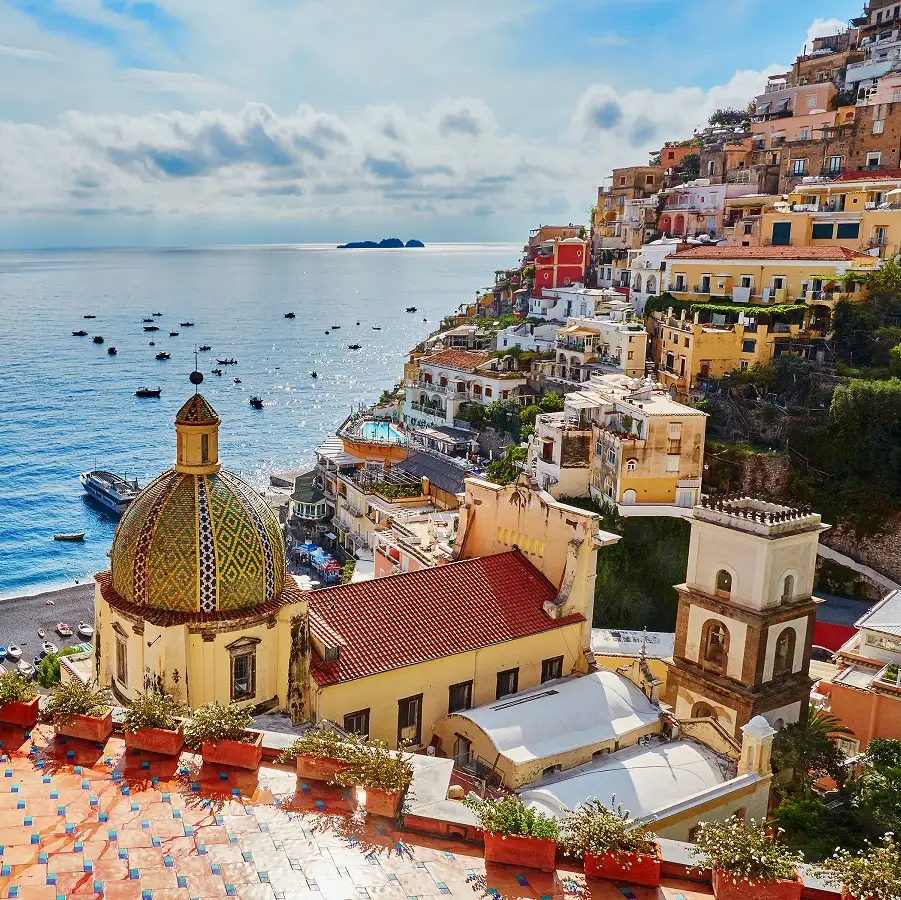
Day 6
Sorrento
Day 6
Sorrento

9:00 AM - 5:00 PM
Amalfi Coast, Guided
Experience the stunning Amalfi Coast, said to be one of Europe's most beautiful stretches of coastline, in the comfort of a boat and private car with your own guide-driver. The corniche winding road that winds around the towering cliffs with sheer drops into the sea and magnificent pastel-colored villages are much more easily visited with a private driver than with public transport or your own car.

Ravello Town Center (Amalfi Coast)
Show More
Show More


Ravello Town Center (Amalfi Coast)
Show More
Show More


Ravello Town Center (Amalfi Coast)
Show More
Show More


Ravello Town Center (Amalfi Coast)
Show More
Show More


Ravello Town Center (Amalfi Coast)
Show More
Show More

prev
next

Day 6
Sorrento

Ravello Town Center (Amalfi Coast)
 Highlight of Amalfi Coast, Guided
Highlight of Amalfi Coast, Guided
Ravello Town Center (Amalfi Coast)
 Highlight of Amalfi Coast, Guided
Highlight of Amalfi Coast, Guided
Ravello Town Center (Amalfi Coast)
 Highlight of Amalfi Coast, Guided
Highlight of Amalfi Coast, Guided
Ravello Town Center (Amalfi Coast)
 Highlight of Amalfi Coast, Guided
Highlight of Amalfi Coast, Guided
Ravello Town Center (Amalfi Coast)
 Highlight of Amalfi Coast, Guided
Highlight of Amalfi Coast, Guided
prev
next


Day 7
Sorrento to Naples
Day 7
Sorrento to Naples




9:00 AM - 1:00 PM
Mount Vesuvius, Guided
Take a private tour to Mount Vesuvius, the Volcano that 2 millenniums ago buried several Roman settlements such as Pompeii and Herculaneum. Certainly, the most observed and the most dangerous volcanoes of the planet, this 4 hours guided tour promises active walking, up-close encounters with the crater of the volcano and beautiful views over the Bay of Naples.

Day 7
Sorrento to Naples



Day 8
Naples
Day 8
Naples




10:00 AM - 1:00 PM
Food Tasting, Guided
Food is a vital part of Neopolitan cultural heritage, spirit, and identity. Your private tour guide will accompany you off the beaten path, through the lively narrow streets and hidden corners of the old town of Naples to provide you with an insider's look at the food scene of one of the greatest culinary centers in Italy.

Da Michele Pizza
Taste the most famous pizza in Naples at the pizzeria featured in Eat, Pray, Love.
Show More

Sea Front Pasta Bar
One of the best pasta places in Naples.
Show More

Da Michele Pizza
Taste the most famous pizza in Naples at the pizzeria featured in Eat, Pray, Love.
Show More

Sea Front Pasta Bar
One of the best pasta places in Naples.
Show More

Da Michele Pizza
Taste the most famous pizza in Naples at the pizzeria featured in Eat, Pray, Love.
Show More

Sea Front Pasta Bar
One of the best pasta places in Naples.
Show More
prev
next

Day 8
Naples


Da Michele Pizza
 Highlight of Food Tasting, Guided
Highlight of Food Tasting, GuidedTaste the most famous pizza in Naples at the pizzeria featured in Eat, Pray, Love.
This pizzeria has been making pizza since 1870, and many claim that it is the best pizza in Naples. They serve only two kinds of pizza - Margherita and Marinara (without Mozzarella but with lots of garlic and oregano). Be prepared to wait for a spot, at any time of the day. Be prepared to wait and to share a table - no reservations are accepted.
Sea Front Pasta Bar
 Highlight of Food Tasting, Guided
Highlight of Food Tasting, GuidedOne of the best pasta places in Naples.
$$$$. Watch your chef prepare your meal in front of you. If you've had your fill of pizza and seafood and want to get back to the Italian staple, then this is one of the best places in Naples. Prices are a bit higher than elsewhere here. [Piazza Municipio 1, Tel. 39 081 1849 6287, www.facebook.com/dimartinoseafront].

Da Michele Pizza
 Highlight of Food Tasting, Guided
Highlight of Food Tasting, GuidedTaste the most famous pizza in Naples at the pizzeria featured in Eat, Pray, Love.
This pizzeria has been making pizza since 1870, and many claim that it is the best pizza in Naples. They serve only two kinds of pizza - Margherita and Marinara (without Mozzarella but with lots of garlic and oregano). Be prepared to wait for a spot, at any time of the day. Be prepared to wait and to share a table - no reservations are accepted.
Sea Front Pasta Bar
 Highlight of Food Tasting, Guided
Highlight of Food Tasting, GuidedOne of the best pasta places in Naples.
$$$$. Watch your chef prepare your meal in front of you. If you've had your fill of pizza and seafood and want to get back to the Italian staple, then this is one of the best places in Naples. Prices are a bit higher than elsewhere here. [Piazza Municipio 1, Tel. 39 081 1849 6287, www.facebook.com/dimartinoseafront].

Da Michele Pizza
 Highlight of Food Tasting, Guided
Highlight of Food Tasting, GuidedTaste the most famous pizza in Naples at the pizzeria featured in Eat, Pray, Love.
This pizzeria has been making pizza since 1870, and many claim that it is the best pizza in Naples. They serve only two kinds of pizza - Margherita and Marinara (without Mozzarella but with lots of garlic and oregano). Be prepared to wait for a spot, at any time of the day. Be prepared to wait and to share a table - no reservations are accepted.
Sea Front Pasta Bar
 Highlight of Food Tasting, Guided
Highlight of Food Tasting, GuidedOne of the best pasta places in Naples.
$$$$. Watch your chef prepare your meal in front of you. If you've had your fill of pizza and seafood and want to get back to the Italian staple, then this is one of the best places in Naples. Prices are a bit higher than elsewhere here. [Piazza Municipio 1, Tel. 39 081 1849 6287, www.facebook.com/dimartinoseafront].
prev
next


Day 9
Naples
Day 9
Naples

Mid-Day to Evening
Ruins of Pompeii
Possibly the most fascinating and accessible archaeological site in the world, Pompeii has been slowly revealing its secrets to the world since excavations began in earnest back in the late 18th century. Even today archaeologists are still uncovering unexplored parts of the site and building up a more accurate picture of how Pompeians lived prior to the catastrophic explosion of nearby Mt Vesuvius in 79 AD. While the ruins are fairly easy to reach via the local train network, taking a guided tour from Naples can be a more comfortable experience. Since the site is so incredibly large, it is also helpful to see it with a good guide who will organize your time there, as well as tell you the history and stories behind what you see. On the other hand, traveling independently and using the very cost-effective Artecard for entrance allows you to see the ruins at your own pace.

House of the Vettii
Visit this incredibly well-preserved upper class residence.
Show More

Amphitheater
See the oldest surviving Roman amphitheatre - built in 70 BC!
Show More

Brothel
Visit the Lupanare (brothel) of Pompeii to see the preserved erotic paintings and ancient grafiti.
Show More

House of the Tragic Poet
Visit this fascinating restored Pompeiian home with a famous animal mosaic.
Show More

House of the Vettii
Visit this incredibly well-preserved upper class residence.
Show More

Amphitheater
See the oldest surviving Roman amphitheatre - built in 70 BC!
Show More

Brothel
Visit the Lupanare (brothel) of Pompeii to see the preserved erotic paintings and ancient grafiti.
Show More

House of the Tragic Poet
Visit this fascinating restored Pompeiian home with a famous animal mosaic.
Show More
prev
next

Day 9
Naples


House of the Vettii
 Highlight of Ruins of Pompeii
Highlight of Ruins of PompeiiVisit this incredibly well-preserved upper class residence.
The House of the Vetti is one of the richest and most famous sights in Pompeii. It was the property of two wealthy merchants, and it features some beautiful original wall paintings, still in their original positions, the most famous (or notorious) of which is the extraordinary front image of the god Priapus weighing his enormous phallus against a money bag.

Amphitheater
 Highlight of Ruins of Pompeii
Highlight of Ruins of PompeiiSee the oldest surviving Roman amphitheatre - built in 70 BC!
The amphitheatre was used as a venue for bloody gladiatorial shows with a capacity to hold over 20,000 spectators. It is one of the oldest and most complete pre-Colosseum amphitheatres in the Roman world and was miraculously well preserved following the eruption in 79 AD.

Brothel
 Highlight of Ruins of Pompeii
Highlight of Ruins of PompeiiVisit the Lupanare (brothel) of Pompeii to see the preserved erotic paintings and ancient grafiti.
The only brothel in town is located behind the Stabian Baths and has five small cells, each with its own built-in stone bed and a series of explicitly erotic paintings, possibly acting as a menu from which customers could identify their required services, or perhaps simply as a bit of "inspirational" decoration. Unsurprisingly, it is one of the most visited ruins in Pompeii.

House of the Tragic Poet
 Highlight of Ruins of Pompeii
Highlight of Ruins of PompeiiVisit this fascinating restored Pompeiian home with a famous animal mosaic.
On the threshold is a mosaic dog, with the inscription cave canem ('beware of the dog'). Some of the most striking wall paintings housed in the National Archaeological Museum in the center of Naples were taken from this house.

House of the Vettii
 Highlight of Ruins of Pompeii
Highlight of Ruins of PompeiiVisit this incredibly well-preserved upper class residence.
The House of the Vetti is one of the richest and most famous sights in Pompeii. It was the property of two wealthy merchants, and it features some beautiful original wall paintings, still in their original positions, the most famous (or notorious) of which is the extraordinary front image of the god Priapus weighing his enormous phallus against a money bag.

Amphitheater
 Highlight of Ruins of Pompeii
Highlight of Ruins of PompeiiSee the oldest surviving Roman amphitheatre - built in 70 BC!
The amphitheatre was used as a venue for bloody gladiatorial shows with a capacity to hold over 20,000 spectators. It is one of the oldest and most complete pre-Colosseum amphitheatres in the Roman world and was miraculously well preserved following the eruption in 79 AD.

Brothel
 Highlight of Ruins of Pompeii
Highlight of Ruins of PompeiiVisit the Lupanare (brothel) of Pompeii to see the preserved erotic paintings and ancient grafiti.
The only brothel in town is located behind the Stabian Baths and has five small cells, each with its own built-in stone bed and a series of explicitly erotic paintings, possibly acting as a menu from which customers could identify their required services, or perhaps simply as a bit of "inspirational" decoration. Unsurprisingly, it is one of the most visited ruins in Pompeii.

House of the Tragic Poet
 Highlight of Ruins of Pompeii
Highlight of Ruins of PompeiiVisit this fascinating restored Pompeiian home with a famous animal mosaic.
On the threshold is a mosaic dog, with the inscription cave canem ('beware of the dog'). Some of the most striking wall paintings housed in the National Archaeological Museum in the center of Naples were taken from this house.
prev
next


Day 10
Depart Naples
Day 10
Depart Naples

To Be Determined
Airport Drop-Off
A private transfer service will pick you up from the N/A and take you directly to Naples Capodichino Airport. This is a private transfer for you and your travel party. You do not need to pay the driver as the cost of the transfer is included in your itinerary. IMPORTANT NOTE: Please be aware the car service can fit up to 1 checked item of luggage and 1 personal item per person, such as a purse or small backpack. If you think you will have more baggage, please inform your travel consultant as this may result in an additional fee.

Day 10
Depart Naples


What's Included In Southern Italy in Ten Days Trip

Pre-Paid Tours and Activities:
- Heart of the Empire - Private Tour of Ancient Rome & the Colosseum
- Twilight Trastevere Group Food Tour
- Private Amalfi Coast Tour
- Guided trip to Mount Vesuvius
- Food Tasting Tour
- City Card for Rome, including discounts to many popular attractions

Pre-Paid Transportation:
- 2nd Class Train Tickets from Rome-Naples
- Shuttle Service from Naples to Sorrento
- Shuttle Service from Sorrento to Naples
- Public Transport Tickets for Rome and Naples
- Private Transfer from Rome Fiumicino to Hotel
- Private Transfer to Rome Termini Train Station
- Private Transfer to Airport

Accommodation:
- 4 nights at a hotel of your choice in Rome
- 2 nights at a hotel of your choice in Sorrento
- 3 nights at a hotel of your choice in Naples

Go Real Travel Mobile App:
- Itinerary Plan & Reservations Info
- Points of Interest
- Detailed Travel Information
- Maps & Directions
Other Trips You May Like

10 Days
From$2699USD
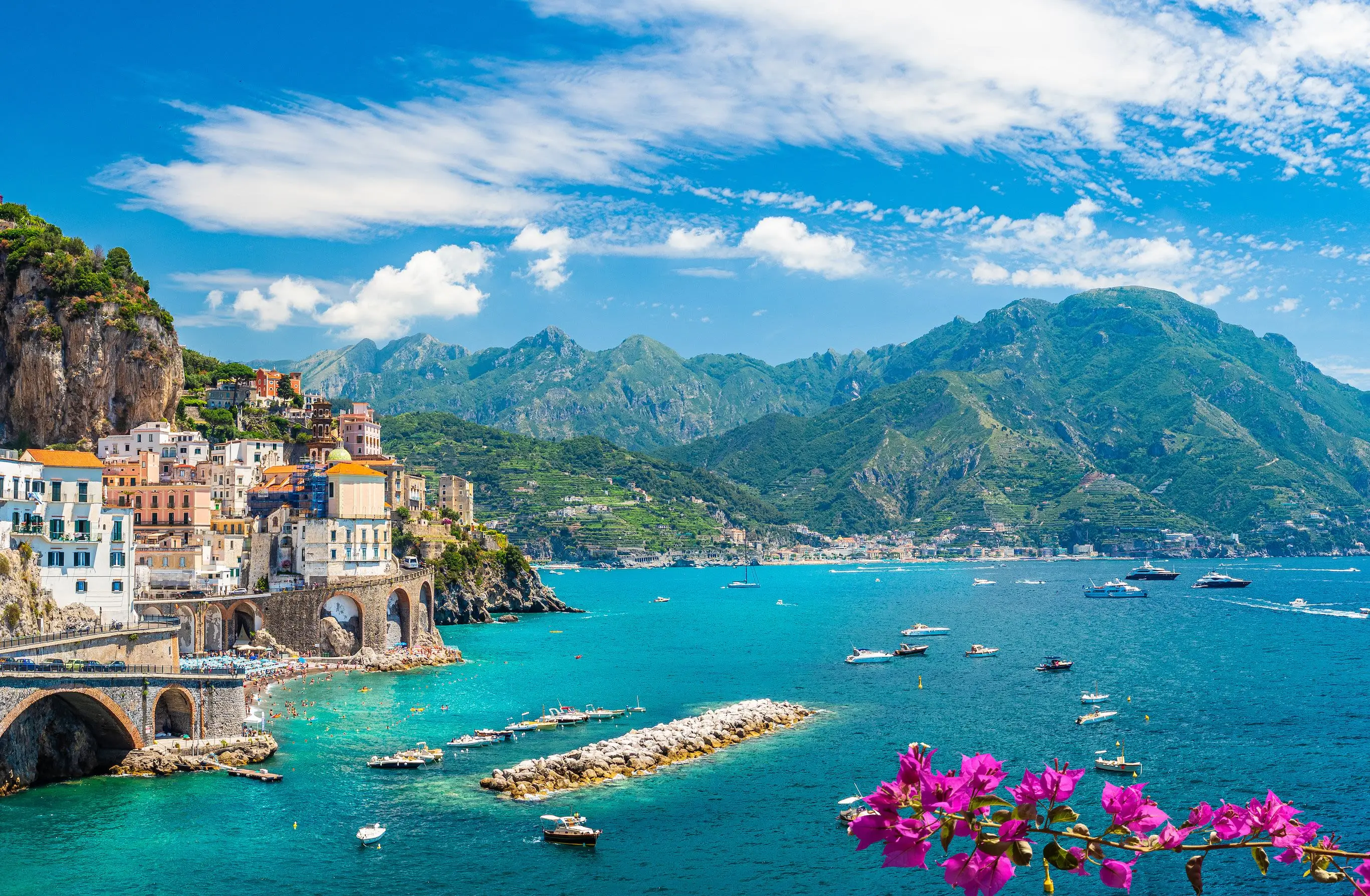
7 Days
From$1995USD

5 Days
From$1399USD
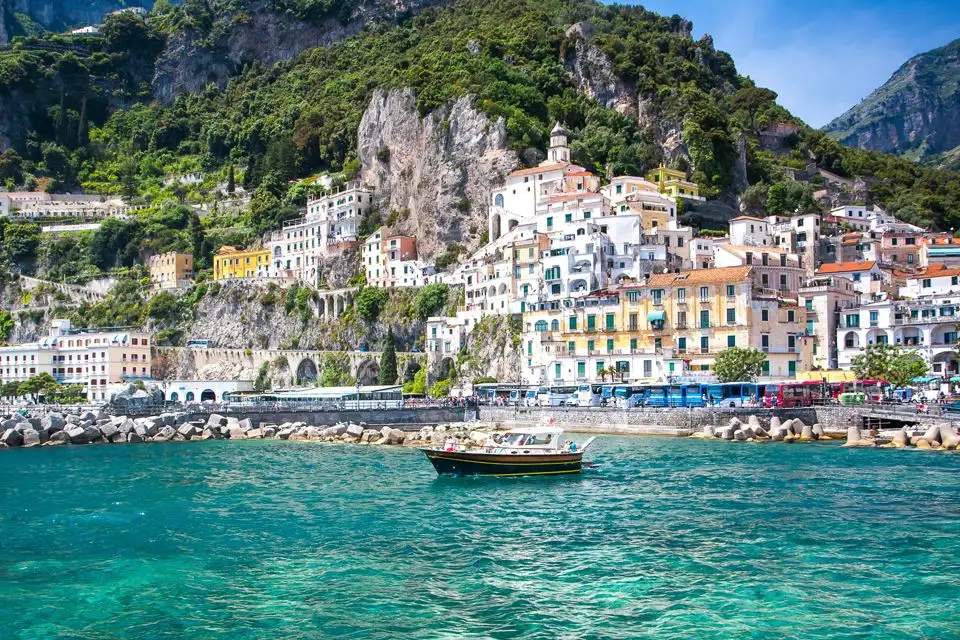
5 Days
From$1290USD

11 Days
From$4300USD

9 Days
From$3790USD

9 Days
From$2356USD
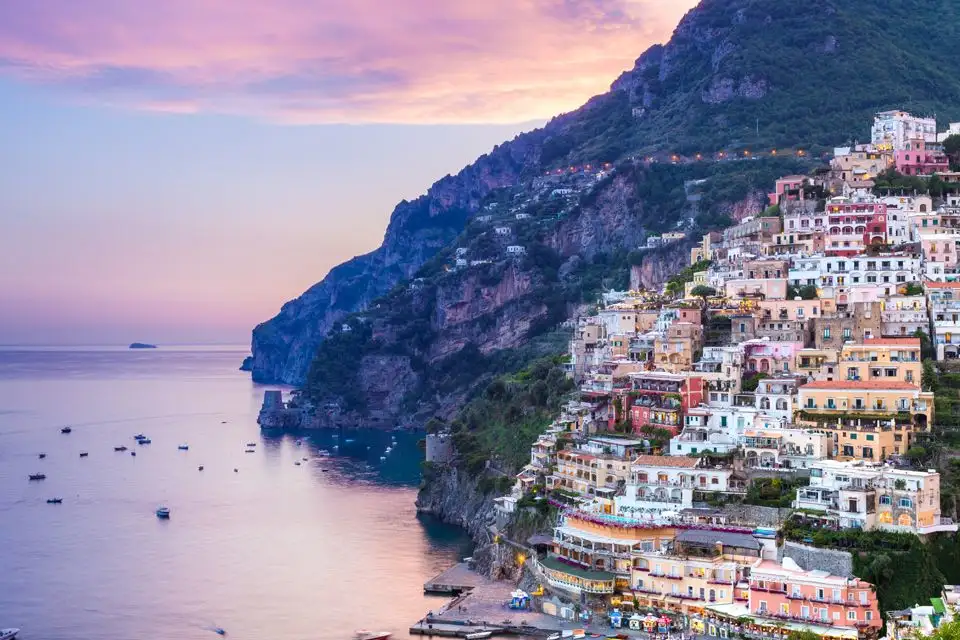
7 Days
From$2995USD
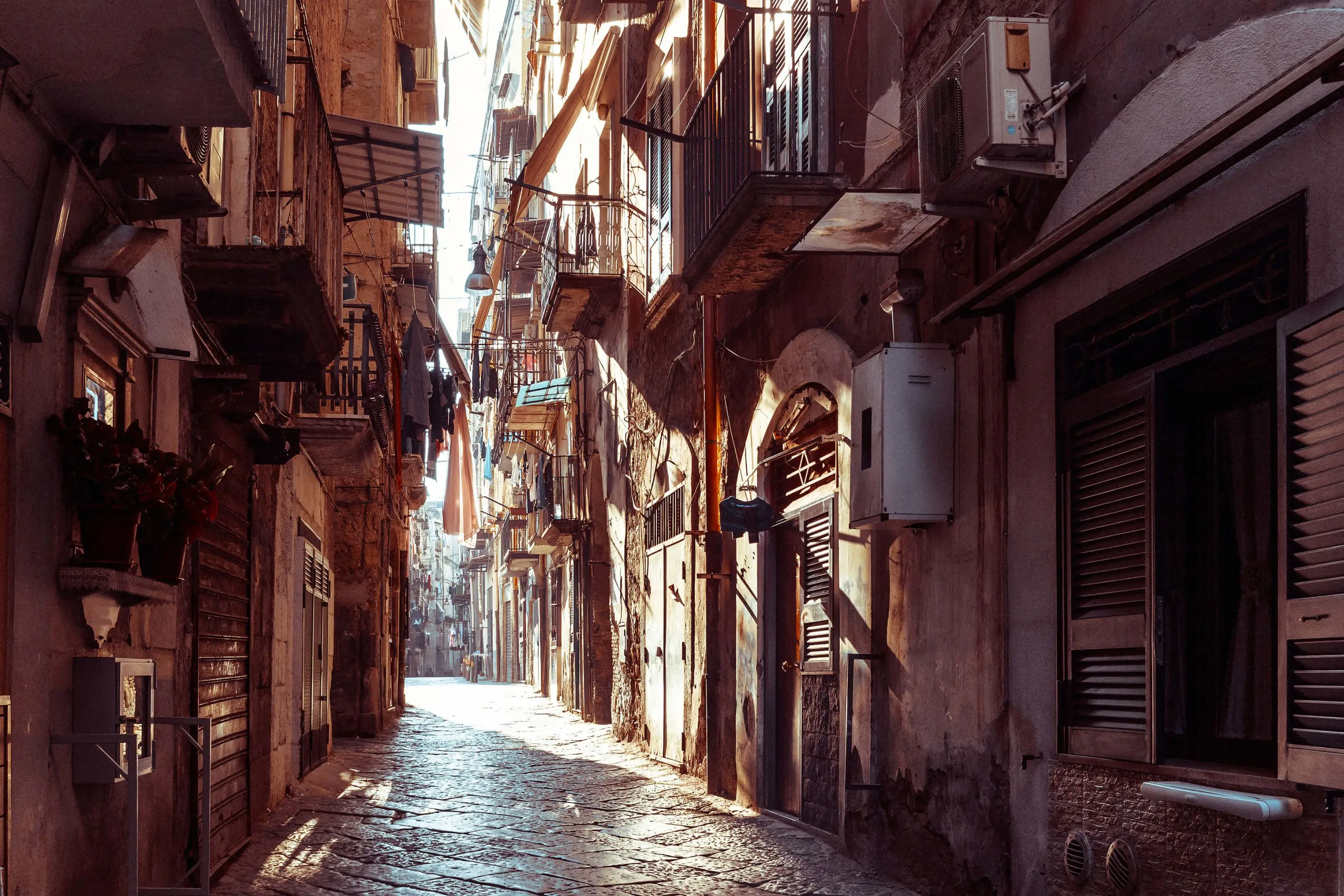
7 Days
From$1859USD

10 Days
From$2699USD

7 Days
From$1995USD

5 Days
From$1399USD

5 Days
From$1290USD

11 Days
From$4300USD

9 Days
From$3790USD

9 Days
From$2356USD

7 Days
From$2995USD

7 Days
From$1859USD
prev
next
Featured Blogs
prev
next
Our Customers Say It Best
Marianne Strydom, Paarl, South Africa
I just wanted to thank you for organizing an amazing trip for me – I packed in so much in such a short period of time and everything was just perfect. The way you do things makes it possible to really get to know the destination, which for me as a travel agent could not have been better. 

Otto Chuy, Los Angeles, California
I am still surprised how everything worked as planned, without a hitch. All instructions in your itinerary were precise and correct. Your suggestions and comments in each of the locations we went to were very helpful. All your guides, without exception, were wonderful and exactly on time. 

Malini Dutta, Boston, Massachusetts
We can't thank you enough for the detailed plans, maps, and suggestions. It really felt that someone was holding our hands and showing us around. We had all the excitement of discovering foreign lands, with none of the problems that can happen while negotiating unfamiliar places. In fact, all the cities felt like home within a few hours of arriving and exploring. 

Bev and Mark Frankel, Williamsburg, Virginia
We could not be more pleased with Go Real Travel! You took the guess work out of things like public transport but still managed to allow us the freedom to tour as we wanted. Our guides were exceptional and every time I saw a Viking Cruise tour of 25 people, I realized the quality experience we were getting with Go Real. 

Marianne Strydom, Paarl, South Africa
I just wanted to thank you for organizing an amazing trip for me – I packed in so much in such a short period of time and everything was just perfect. The way you do things makes it possible to really get to know the destination, which for me as a travel agent could not have been better. 

Otto Chuy, Los Angeles, California
I am still surprised how everything worked as planned, without a hitch. All instructions in your itinerary were precise and correct. Your suggestions and comments in each of the locations we went to were very helpful. All your guides, without exception, were wonderful and exactly on time. 

Malini Dutta, Boston, Massachusetts
We can't thank you enough for the detailed plans, maps, and suggestions. It really felt that someone was holding our hands and showing us around. We had all the excitement of discovering foreign lands, with none of the problems that can happen while negotiating unfamiliar places. In fact, all the cities felt like home within a few hours of arriving and exploring. 

Bev and Mark Frankel, Williamsburg, Virginia
We could not be more pleased with Go Real Travel! You took the guess work out of things like public transport but still managed to allow us the freedom to tour as we wanted. Our guides were exceptional and every time I saw a Viking Cruise tour of 25 people, I realized the quality experience we were getting with Go Real. 



Explore cities in more detail
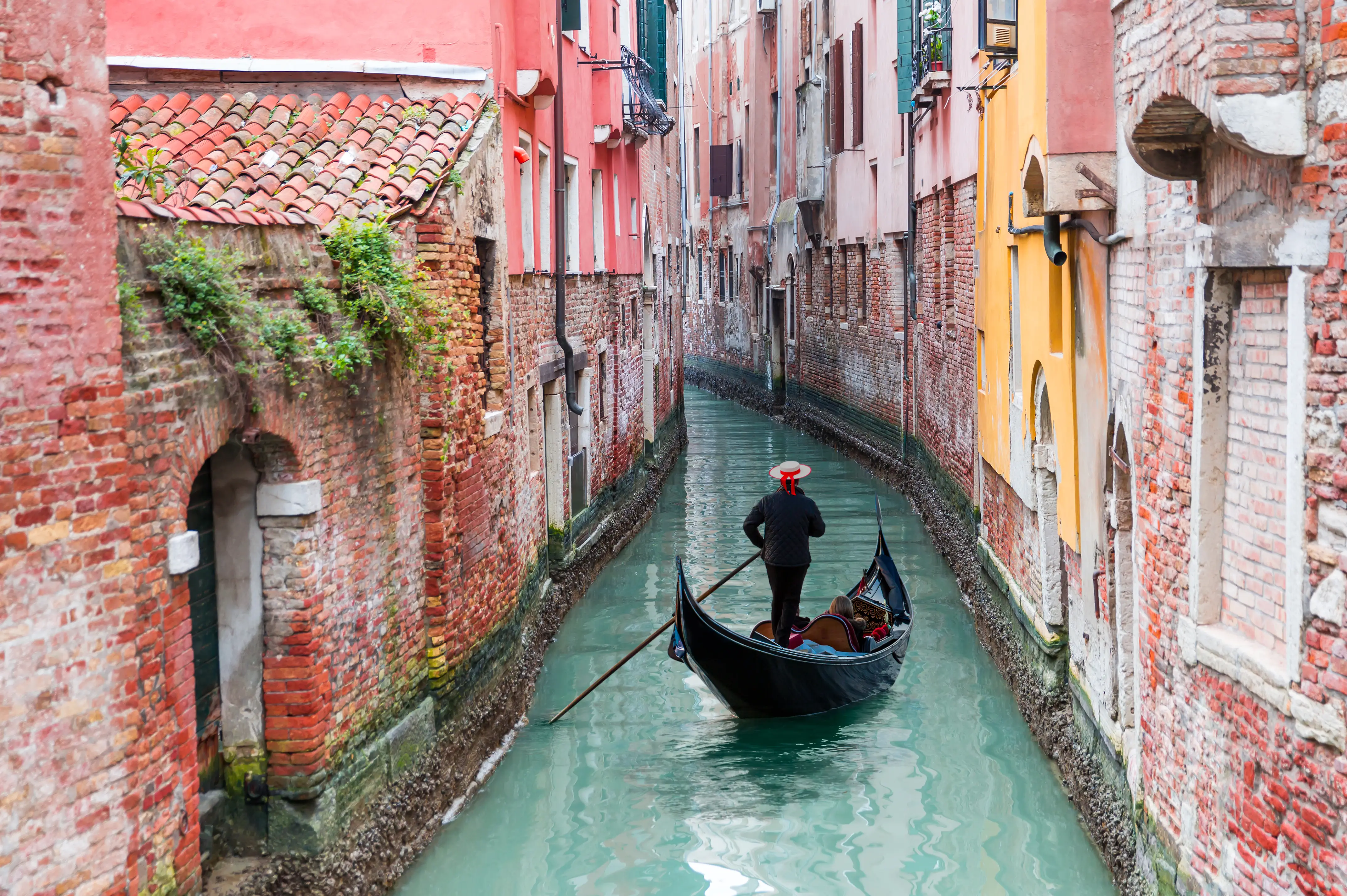
Venice
Venice is a city with no equal. Built on a series of islands on a lagoon, it was once a powerful city-state. Echoes of that old magnificence can be seen everywhere here, from the stunning buildings that rise out of the canals, to the bridges that arc across them. Take a Gondola ride through the canals that form the city’s veins, or wander through the winding streets drinking in the sights. You’ll see Venice attracts tourists in huge numbers, and that’s with good reason. It’s home to a seemingly limitless amount of art, culture, history, and architecture. St Mark’s Basilica, the Doge’s Palace, and the Campanile di San Marco just barely scratch the surface. There’s a 700-year-old market, Rialto, which is still open today. The Ponte di Rialto bridge connects the neighborhoods of San Marco and San Polo, stretching across the Grand Canal. Venice has weathered the last several centuries with elegance and pride, a place that will surpass even your highest expectations.

Learn About Venice
Build Venice Trip
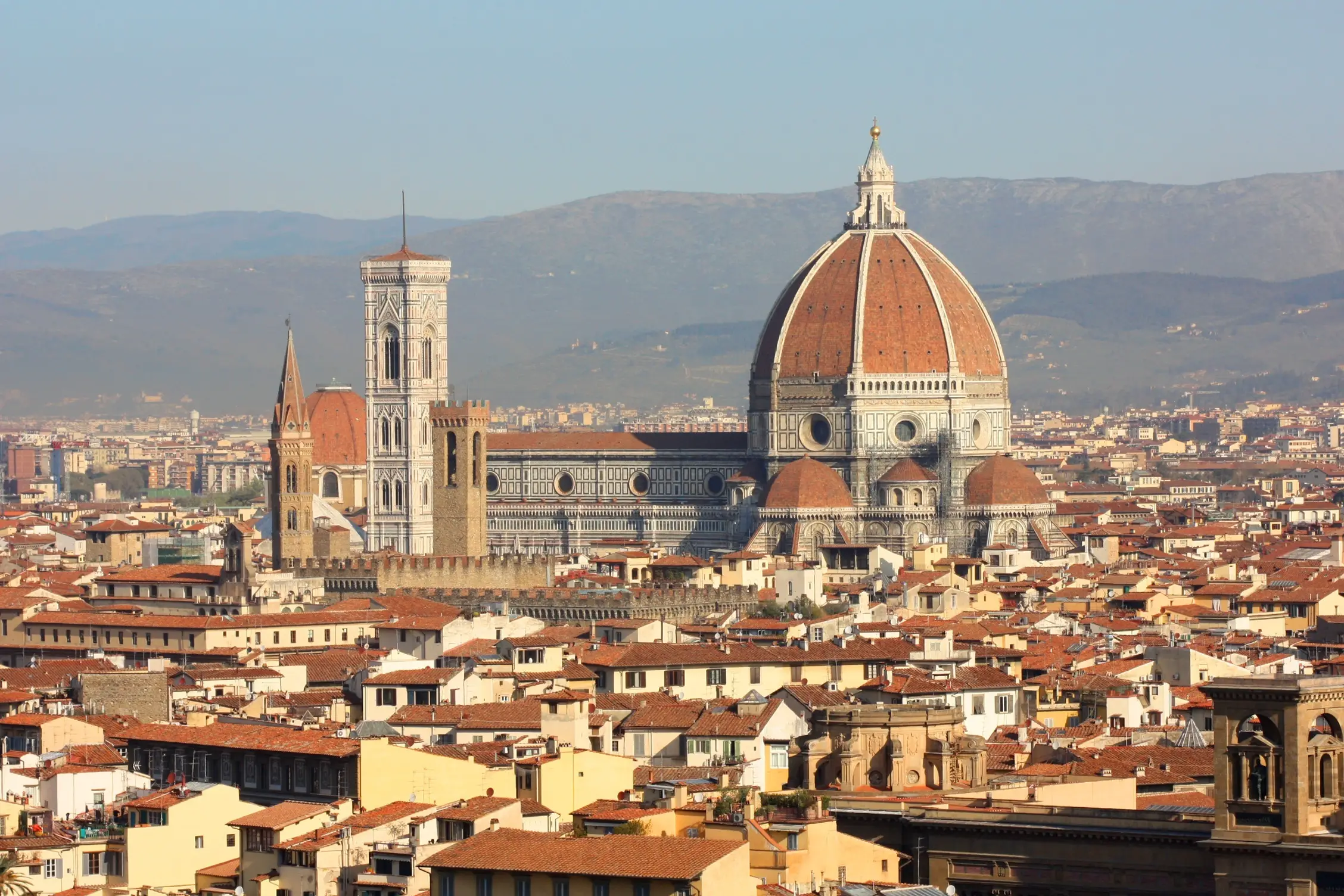
Florence
Culture and history are thick in the air in Florence. Located on the banks of the Arno River in Tuscany, Florence’s past is deeply compelling. The birthplace of the Renaissance, Florence is where innovators like Dante, Machiavelli, Michelangelo, and Da Vinci made their fortunes. Centuries of art, politics, and commerce have left their mark on every stone in this Northern Italian city. In the 15th and 16th centuries, Florentine banks funded new enterprises that went on to change the history of the world. Powerful families like the Medici’s financed some of the finest art in history and pioneered new ways of doing statecraft and politics. As you stand in the Piazzale Michelangelo and gaze upon the city below it’s hard to take it all in at once. It feels like behind every door in Florence might hide a work of genius. Michelangelo’s David and Botticelli’s Primavera can be found just a short walk away. After a long day wandering the streets and gazing at art, fueled by exquisite coffee and gelato, relax like the locals do: with a glass of some of the best wine in the world.

Learn About Florence
Build Florence Trip

Milan
Milan is Italy’s most forward-looking city. An international center for fashion, fine dining, and design, it seems as though Milanese people breathe style. From the gleam on your wine glass to the twists of its cathedral’s spires, everything in Milan is finished to perfection. Home to the Italian stock exchange, a world-famous fashion industry, and a frantic business district, Milan is fast-paced and commercially minded. The shopping in Milan is second to none. At the Galleria Vittorio Emanuele II, one of the world’s oldest shopping malls, a glass-iron ceiling soars over brands like Louis Vuitton, Gucci, Massimo Dutti, and Amani. Along with the fashion, Milan’s cathedral, castle, and canals are also must-sees. But to view the city’s most prized possession - Leonardo da Vinci’s Last Supper, you must make an appointment. Tickets to view this mural sell out weeks in advance. It is truly a bucket-list worthy work of art. After a day taking in all the glamor and culture, take a seat in one of Milan’s well-appointed eateries. The Navigli Quarter is packed with restaurants, bars, and cafes, perfect for a relaxed Aperol spritz or pizza along the city’s canals.

Learn About Milan
Build Milan Trip

Rome
One of the must-sees of Italy, and indeed all of Europe, Rome is a city with history flowing through its veins. There is an endless amount to see, do, and learn here, with something for every taste and disposition. Rome was the center of Western civilization for a Millenium and during that time, accumulated a list of historical and cultural treasures that no other destination can truly match. The Pantheon, Colosseum, Roman Forum, and Cirus of Maxentius are just a few examples of what can be seen and experienced in Rome, which at times feels more like a giant outdoor museum than a city. At Rome’s heart, you’ll find the Vatican, home of the Roman Catholic Church and the Pope. Here visitors can see the legendary Sistine Chapel. Transcending a mere building, the chapel is a walk-in work of art. Although historical sights can be found on just about every corner, it’s entirely possible to fill a day just wandering around Rome. The city’s charming streets and open Piazzas are filled with beautiful sights and places to sit, grab the best Cappuccino in the world, and enjoy the view.

Learn About Rome
Build Rome Trip

Sorrento
Sorrento is the perfect place to bask in the Mediterranean mood, somewhere to enjoy the sun, the sea, fine dining, and good wine. Churches like the Duomo and the Church del Carmine beg to be explored, along with museums, galleries, and castles. But mostly Sorrento is somewhere to kick back and, for a few days, focus entirely on the business of living - and living well. Seafood dinners, Limoncello evenings, swimming, hiking, and boat trips are all perfect ways to pass time in this seaside haven. If you really tire of all that, Sorrento is well-placed for those looking to explore its surrounding region. A train ride away from Naples, and within fairly easy reach of Pompeii, Sorrento is the doorstep to the attractions of Campania. A short ferry ride away is the island of Capri, with its own collection of beaches, restaurants, and excellent hiking. It’s not necessary, however, to pack the days full of exploring and adventure. While all that is certainly possible, a perfectly acceptable alternative is just to relax and soak in the special Mediterranean vibe.

Learn About Sorrento
Build Sorrento Trip
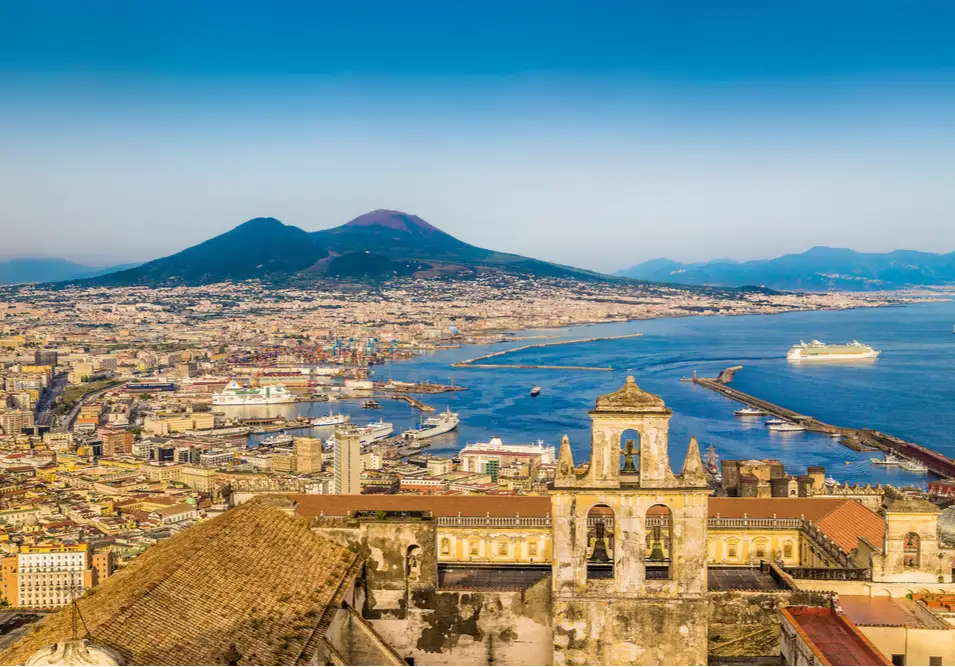
Naples
Gritty and chaotic Naples calls to travelers who want to experience the real Italy. Pressed along the coast of Campania, hilly Naples is jammed with maze-like streets, strung with outdoor clotheslines, descending toward the sea below. A much deserved UNESCO World Heritage site, Naples is famous for its churches, museums, castles, and catacombs. As you navigate the city, you’ll find yourself immersed by its culture and history. You can easily occupy a full day gazing at churches like the Naples Cathedral, San Francesco di Paola, and Cappella Sansevero. If you cast your eyes toward the Gulf of Naples, you’ll see Mount Vesuvius looming over the harbor. This foreboding volcano erupted in AD 79. Not far from the inner city — less than an hour by train — you’ll find the ancient town of Pompeii, its dramatic ruins still preserved in ash from the eruption. One of the best things you can do in Naples is to eat. This is the city where pizza was born. Propped up by its ripe tomatoes, local cheeses, and fresh fish, food from Naples has come to define what many see as the height of Italian cuisine. Everything you taste in Naples seems like a delicacy. Authentic and vivid, Naples is a true Italian city where the ancient world meets the modern-day with a bang.

Learn About Naples
Build Naples Trip

Venice
Venice is a city with no equal. Built on a series of islands on a lagoon, it was once a powerful city-state. Echoes of that old magnificence can be seen everywhere here, from the stunning buildings that rise out of the canals, to the bridges that arc across them. Take a Gondola ride through the canals that form the city’s veins, or wander through the winding streets drinking in the sights. You’ll see Venice attracts tourists in huge numbers, and that’s with good reason. It’s home to a seemingly limitless amount of art, culture, history, and architecture. St Mark’s Basilica, the Doge’s Palace, and the Campanile di San Marco just barely scratch the surface. There’s a 700-year-old market, Rialto, which is still open today. The Ponte di Rialto bridge connects the neighborhoods of San Marco and San Polo, stretching across the Grand Canal. Venice has weathered the last several centuries with elegance and pride, a place that will surpass even your highest expectations.

Learn About Venice
Build Venice Trip

Florence
Culture and history are thick in the air in Florence. Located on the banks of the Arno River in Tuscany, Florence’s past is deeply compelling. The birthplace of the Renaissance, Florence is where innovators like Dante, Machiavelli, Michelangelo, and Da Vinci made their fortunes. Centuries of art, politics, and commerce have left their mark on every stone in this Northern Italian city. In the 15th and 16th centuries, Florentine banks funded new enterprises that went on to change the history of the world. Powerful families like the Medici’s financed some of the finest art in history and pioneered new ways of doing statecraft and politics. As you stand in the Piazzale Michelangelo and gaze upon the city below it’s hard to take it all in at once. It feels like behind every door in Florence might hide a work of genius. Michelangelo’s David and Botticelli’s Primavera can be found just a short walk away. After a long day wandering the streets and gazing at art, fueled by exquisite coffee and gelato, relax like the locals do: with a glass of some of the best wine in the world.

Learn About Florence
Build Florence Trip

Milan
Milan is Italy’s most forward-looking city. An international center for fashion, fine dining, and design, it seems as though Milanese people breathe style. From the gleam on your wine glass to the twists of its cathedral’s spires, everything in Milan is finished to perfection. Home to the Italian stock exchange, a world-famous fashion industry, and a frantic business district, Milan is fast-paced and commercially minded. The shopping in Milan is second to none. At the Galleria Vittorio Emanuele II, one of the world’s oldest shopping malls, a glass-iron ceiling soars over brands like Louis Vuitton, Gucci, Massimo Dutti, and Amani. Along with the fashion, Milan’s cathedral, castle, and canals are also must-sees. But to view the city’s most prized possession - Leonardo da Vinci’s Last Supper, you must make an appointment. Tickets to view this mural sell out weeks in advance. It is truly a bucket-list worthy work of art. After a day taking in all the glamor and culture, take a seat in one of Milan’s well-appointed eateries. The Navigli Quarter is packed with restaurants, bars, and cafes, perfect for a relaxed Aperol spritz or pizza along the city’s canals.

Learn About Milan
Build Milan Trip

Rome
One of the must-sees of Italy, and indeed all of Europe, Rome is a city with history flowing through its veins. There is an endless amount to see, do, and learn here, with something for every taste and disposition. Rome was the center of Western civilization for a Millenium and during that time, accumulated a list of historical and cultural treasures that no other destination can truly match. The Pantheon, Colosseum, Roman Forum, and Cirus of Maxentius are just a few examples of what can be seen and experienced in Rome, which at times feels more like a giant outdoor museum than a city. At Rome’s heart, you’ll find the Vatican, home of the Roman Catholic Church and the Pope. Here visitors can see the legendary Sistine Chapel. Transcending a mere building, the chapel is a walk-in work of art. Although historical sights can be found on just about every corner, it’s entirely possible to fill a day just wandering around Rome. The city’s charming streets and open Piazzas are filled with beautiful sights and places to sit, grab the best Cappuccino in the world, and enjoy the view.

Learn About Rome
Build Rome Trip

Sorrento
Sorrento is the perfect place to bask in the Mediterranean mood, somewhere to enjoy the sun, the sea, fine dining, and good wine. Churches like the Duomo and the Church del Carmine beg to be explored, along with museums, galleries, and castles. But mostly Sorrento is somewhere to kick back and, for a few days, focus entirely on the business of living - and living well. Seafood dinners, Limoncello evenings, swimming, hiking, and boat trips are all perfect ways to pass time in this seaside haven. If you really tire of all that, Sorrento is well-placed for those looking to explore its surrounding region. A train ride away from Naples, and within fairly easy reach of Pompeii, Sorrento is the doorstep to the attractions of Campania. A short ferry ride away is the island of Capri, with its own collection of beaches, restaurants, and excellent hiking. It’s not necessary, however, to pack the days full of exploring and adventure. While all that is certainly possible, a perfectly acceptable alternative is just to relax and soak in the special Mediterranean vibe.

Learn About Sorrento
Build Sorrento Trip

Naples
Gritty and chaotic Naples calls to travelers who want to experience the real Italy. Pressed along the coast of Campania, hilly Naples is jammed with maze-like streets, strung with outdoor clotheslines, descending toward the sea below. A much deserved UNESCO World Heritage site, Naples is famous for its churches, museums, castles, and catacombs. As you navigate the city, you’ll find yourself immersed by its culture and history. You can easily occupy a full day gazing at churches like the Naples Cathedral, San Francesco di Paola, and Cappella Sansevero. If you cast your eyes toward the Gulf of Naples, you’ll see Mount Vesuvius looming over the harbor. This foreboding volcano erupted in AD 79. Not far from the inner city — less than an hour by train — you’ll find the ancient town of Pompeii, its dramatic ruins still preserved in ash from the eruption. One of the best things you can do in Naples is to eat. This is the city where pizza was born. Propped up by its ripe tomatoes, local cheeses, and fresh fish, food from Naples has come to define what many see as the height of Italian cuisine. Everything you taste in Naples seems like a delicacy. Authentic and vivid, Naples is a true Italian city where the ancient world meets the modern-day with a bang.

Learn About Naples
Build Naples Trip
prev
next


 Map of Your Itinerary Route
Map of Your Itinerary Route
Zoom In to the cities to see your itinerary in more detail


 4.8
4.8 
